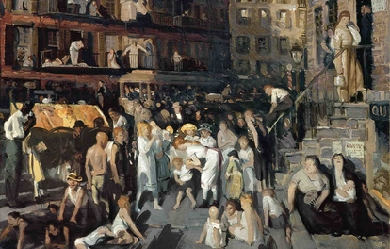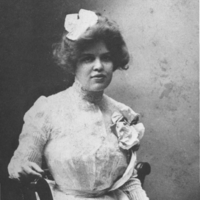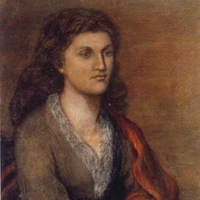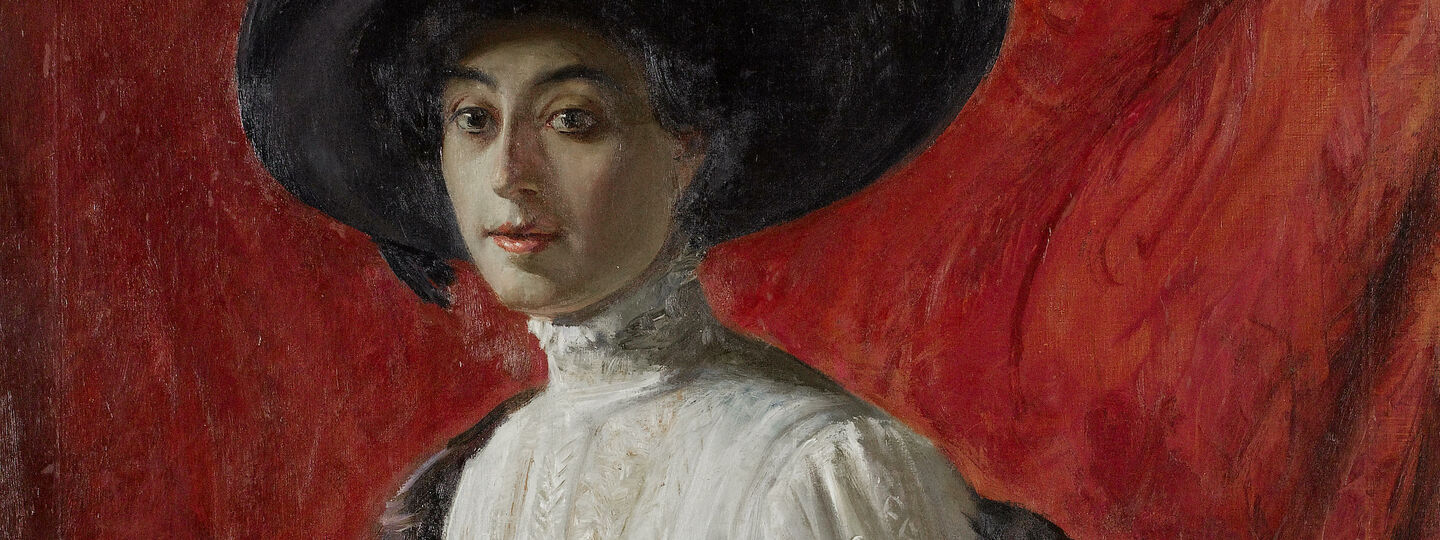
Info
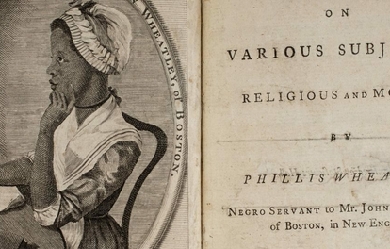
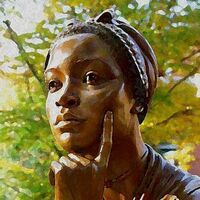
Phillis Wheatley was the first black poet in America to publish a book. She was born around 1753 in West Africa and brought to New England in 1761, where John Wheatley of Boston purchased her as a gift for his wife. Although they brought her into the household as a slave, the Wheatleys took a great interest in Phillis's education. Many biographers have pointed to her precocity; Wheatley learned to read and write English by the age of nine, and she became familiar with Latin, Greek, the Bible, and selected classics at an early age. She began writing poetry at thirteen, modeling her work on the English poets of the time, particularly John Milton, Thomas Gray, and Alexander Pope. Her poem "On the Death of the Rev. Mr. George Whitefield" was published as a broadside in cities such as Boston, New York, and Philadelphia and garnered Wheatley national acclaim. This poem was also printed in London. Over the next few years, she would print a number of broadsides elegizing prominent English and colonial leaders. Wheatley's doctor suggested that a sea voyage might improve her delicate health, so in 1771 she accompanied Nathaniel Wheatley on a trip to London. She was well received in London and wrote to a friend of the "unexpected and unmerited civility and complaisance with which I was treated by all." In 1773, thirty-nine of her poems were published in London as Poems on Various Subjects, Religious and Moral. The book includes many elegies as well as poems on Christian themes; it also includes poems dealing with race, such as the often-anthologized "On Being Brought from Africa to America." She returned to America in 1773. After Mr. and Mrs. Wheatley died, Phillis was left to support herself as a seamstress and poet. It is unclear precisely when Wheatley was freed from slavery, although scholars suggest it occurred between 1774 and 1778. In 1776, Wheatley wrote a letter and poem in support of George Washington; he replied with an invitation to visit him in Cambridge, stating that he would be "happy to see a person so favored by the muses." In 1778, she married John Peters, who kept a grocery store. They had three children together, all of whom died young. Because of the war and the poor economy, Wheatley experienced difficulty publishing her poems. She solicited subscribers for a new volume that would include thirty-three new poems and thirteen letters, but was unable to raise the funds. Phillis Wheatley, who had once been internationally celebrated, died alone in a boarding house in 1784. She was thirty-one years old. Many of the poems for her proposed second volume disappeared and have never been recovered.
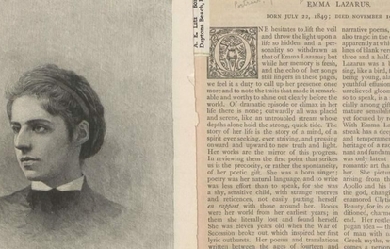
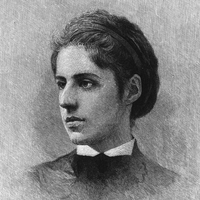
Emma Lazarus (July 22, 1849– November 19, 1887) was an American poet born in New York City. She is best known for “The New Colossus”, a sonnet written in 1883; its lines appear inscribed on a bronze plaque in the pedestal of the Statue of Liberty installed in 1903, a decade and a half after Lazarus’s death. Lazarus was born into a large Sephardic-Ashkenazi Jewish family, the fourth of seven children of Moses Lazarus and Esther Nathan, The Lazarus family was from Germany, and the Nathan family was originally from Portugal and resident in New York long before the American Revolution.
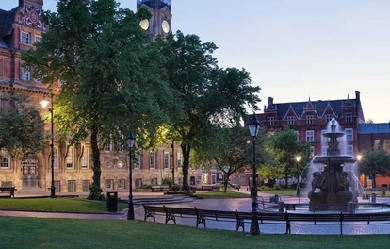
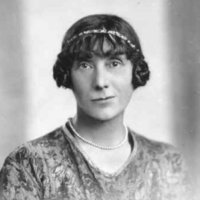
Jessie Pope (18 March 1868– 14 December 1941) was an English poet, writer and journalist, who remains best known for her patriotic motivational poems published during World War I. Wilfred Owen directed his 1917 poem Dulce et Decorum Est at Pope, whose literary reputation has faded into relative obscurity as those of war poets such as Owen and Siegfried Sassoon have grown. Early career Born in Leicester, she was educated at North London Collegiate School. She was a regular contributor to Punch, The Daily Mail and The Daily Express, also writing for Vanity Fair, Pall Mall Magazine and the Windsor. Prose editor A lesser-known literary contribution was Pope’s discovery of Robert Tressell’s novel The Ragged Trousered Philanthropists, when his daughter mentioned the manuscript to her after his death. Pope recommended it to her publisher, who commissioned her to abridge it before publication. This, a partial bowdlerisation, moulded it to a standard working-class tragedy while greatly downgrading its socialist political content. Verse Other works include Paper Pellets (1907), an anthology of humorous verse. She also wrote verses for children’s books, such as The Cat Scouts (Blackie, 1912) and the following eulogy to her friend, Bertram Fletcher Robinson (published in the Daily Express on Saturday 26 January 1907): Good Bye, kind heart; our benisons preceding, Shall shield your passing to the other side. The praise of your friends shall do your pleading In love and gratitude and tender pride. To you gay humorist and polished writer, We will not speak of tears or startled pain. You made our London merrier and brighter, God bless you, then, until we meet again! War poetry Pope’s war poetry was originally published in The Daily Mail; it encouraged enlistment and handed a white feather to youths who would not join the colours. Nowadays, this poetry is considered to be jingoistic, consisting of simple rhythms and rhyme schemes, with extensive use of rhetorical questions to persuade (and sometimes pressure) young men to join the war. This extract from Who’s for the Game? is typical in style: Who’s for the game, the biggest that’s played, The red crashing game of a fight? Who’ll grip and tackle the job unafraid? And who thinks he’d rather sit tight? Other poems, such as The Call (1915)– “Who’s for the trench– Are you, my laddie?”– expressed similar sentiments. Pope was widely published during the war, apart from newspaper publication producing three volumes: Jessie Pope’s War Poems (1915), More War Poems (1915) and Simple Rhymes for Stirring Times (1916). Criticism Her treatment of the subject is markedly in stark contrast to the anti-war stance of soldier poets such as Owen and Siegfried Sassoon. Many of these men found her work distasteful, Owen in particular. His poem Dulce et Decorum Est was a direct response to her writing, originally dedicated “To Jessie Pope etc.”. A later draft amended this as “To a certain Poetess”, later being removed completely to turn the poem into a general reproach on anyone sympathetic to the war. Pope is prominently remembered first for her pro-war poetry, but also as a representative of homefront female propagandists such as Mrs Humphry Ward, May Wedderburn Cannan, Emma Orczy, and entertainers such as Vesta Tilley. In particular, the poem “War Girls”, similar in structure to her pro-war poetry, states how "No longer caged and penned up/They’re going to keep their end up/Until the khaki soldier boys come marching back". Though largely unknown at the time, the War poets like Nichols, Sassoon and Owen, as well as later writers such as Edmund Blunden, Robert Graves, and Richard Aldington, have come to define the experience of the First World War. Reappraisal Pope’s work is today often presented in schools and anthologies as a counterpoint to the work of the War Poets, a comparison by which her pro-war work suffers both technically and politically. Some writers have attempted a partial re-appraisal of her work as an early pioneer of English women in the workforce, while still critical of both the content and artistic merit of her war poetry. Reminded that Pope was primarily a humourist and writer of light verse, her success in publishing and journalism during the pre-war era, when she was described as the “foremost woman humourist” of her day has been overshadowed by her propagandistic war poems. Her verse has been mined for sympathetic portrayals of the poor and powerless, of women urged to be strong and self-reliant. Her portrayal of the Suffragettes in a pair of counterpointed 1909 poems makes a case both for and against their actions. Later life After the war, Pope continued to rewrite, penning a short novel, poems—many of which continued to reflect upon the war and its aftermath—and books for children. She married a widower bank manager in 1929, when she was 61, and moved from London to Fritton, near Great Yarmouth. She died on 14 December 1941 in Devon.
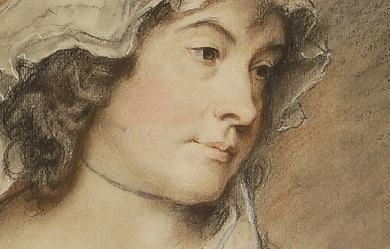
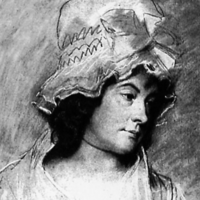
Charlotte Turner Smith (4 May 1749– 28 October 1806) was an English Romantic poet and novelist. She initiated a revival of the English sonnet, helped establish the conventions of Gothic fiction, and wrote political novels of sensibility. Smith was born into a wealthy family and received a typical education for a woman during the late 18th century. However, her father’s reckless spending forced her to marry early. In a marriage that she later described as prostitution, she was given by her father to the violent and profligate Benjamin Smith. Their marriage was deeply unhappy, although they had twelve children together. Charlotte joined Benjamin in debtor’s prison, where she wrote her first book of poetry, Elegiac Sonnets. Its success allowed her to help pay for Benjamin’s release. Benjamin’s father attempted to leave money to Charlotte and her children upon his death, but legal technicalities prevented her from ever acquiring it. Charlotte Smith eventually left Benjamin and began writing to support their children. Smith’s struggle to provide for her children and her frustrated attempts to gain legal protection as a woman provided themes for her poetry and novels; she included portraits of herself and her family in her novels as well as details about her life in her prefaces. Her early novels are exercises in aesthetic development, particularly of the Gothic and sentimentality. “The theme of her many sentimental and didactic novels was that of a badly married wife helped by a thoughtful sensible lover” (Smith’s entry in British Authors Before 1800: A Biographical Dictionary Ed. Stanley Kunitz and Howard Haycraft. New York: H.W. Wilson, 1952. pg. 478.) Her later novels, including The Old Manor House, often considered her best, support the ideals of the French Revolution. Smith was a successful writer, publishing ten novels, three books of poetry, four children’s books, and other assorted works, over the course of her career. She always saw herself as a poet first and foremost, however, as poetry was considered the most exalted form of literature at the time. Scholars credit Smith with transforming the sonnet into an expression of woeful sentiment that would pave the way for poets such as Coleridge, Wordsworth, Shelly and Keats. Smith’s poetry and prose was praised by contemporaries such as Romantic poets William Wordsworth and Samuel Taylor Coleridge as well as novelist Walter Scott. Coleridge, in 1796, even remarked that “those sonnets appear to me the most exquisite, in which moral Sentiments, Affections, or Feelings, are deduced from, and associated with the scenery of Nature”. After 1798, Smith’s popularity waned and by 1803 she was destitute and ill—she could barely hold a pen. She had to sell her books to pay off her debts. In 1806, Smith died. Largely forgotten by the middle of the 19th century, her works have now been republished and she is recognized as an important Romantic writer. Early life Smith was born on 4 May 1749 in London and baptized on 12 June; she was the oldest child of well-to-do Nicholas Turner and Anna Towers. Her two younger siblings, Nicholas and Catherine Ann, were born within the next five years. Smith’s childhood was shaped by her mother’s early death (probably in giving birth to Catherine) and her father’s reckless spending. After losing his wife, Nicholas Turner travelled and the children were raised by Lucy Towers, their maternal aunt (when exactly their father returned is unknown). At the age of six, Charlotte went to school in Chichester and took drawing lessons from the painter George Smith. Two years later, she, her aunt, and her sister moved to London and she attended a girls school in Kensington where she learned dancing, drawing, music, and acting. She loved to read and wrote poems, which her father encouraged. She even submitted a few to the Lady’s Magazine for publication, but they were not accepted. Marriage and first publication Smith’s father encountered financial difficulties upon his return to England and he was forced to sell some of the family’s holdings and to marry the wealthy Henrietta Meriton in 1765. Smith entered society at the age of twelve, leaving school and being tutored at home. On 23 February 1765, at the age of fifteen, she married Benjamin Smith, the son of Richard Smith, a wealthy West Indian merchant and a director of the East India Company. The proposal was accepted for her by her father; forty years later, Smith condemned her father’s action, which she wrote had turned her into a “legal prostitute”. Smith’s marriage was unhappy. She detested living in commercial Cheapside (the family later moved to Southgate and Tottenham) and argued with her in-laws, who she believed were unrefined and uneducated. They, in turn, mocked her for spending time reading, writing, and drawing. Even worse, Benjamin proved to be violent, unfaithful, and profligate. Only her father-in-law, Richard, appreciated her writing abilities, although he wanted her to use them to further his business interests. Richard Smith owned plantations in Barbados and he and his second wife brought five slaves to England, who, along with their descendants, were included as part of the family property in his will. Although Charlotte Smith later argued against slavery in works such as The Old Manor House (1793) and “Beachy Head”, she herself benefited from the income and slave labor of Richard Smith’s plantations. In 1766, Charlotte and Benjamin had their first child, who died the next year just days after the birth of their second, Benjamin Berney (1767–77). Between 1767 and 1785, the couple had ten more children: William Towers (born 1768), Charlotte Mary (born c. 1769), Braithwaite (born 1770), Nicholas Hankey (1771–1837), Married Anni Petroose (1779–1843), Charles Dyer (born 1773), Anna Augusta (1774–94), Lucy Eleanor (born 1776), Lionel (1778–1842), Harriet (born c. 1782), and George (born c. 1785). Only six of Smith’s children survived her. Smith assisted in the family business that her husband had abandoned by helping Richard Smith with his correspondence. She persuaded Richard to set Benjamin up as a gentleman farmer in Hampshire and lived with him at Lys Farm from 1774 until 1783. Worried about Charlotte’s future and that of his grandchildren and concerned that his son would continue his irresponsible ways, Richard Smith willed the majority of his property to Charlotte’s children. However, because he had drawn up the will himself, the documents contained legal problems. The inheritance, originally worth nearly £36,000, was tied up in chancery after his death in 1776 for almost forty years. Smith and her children saw little of it. (It has been proposed that this real case may have inspired the famous fictional case of Jarndyce and Jarndyce, in Dickens’s Bleak House.) In fact, Benjamin illegally spent at least a third of the legacy and ended up in King’s Bench Prison in December 1783. Smith moved in with him and it was in this environment that she wrote and published her first work, Elegiac Sonnets (1784). Elegiac Sonnets achieved instant success, allowing Charlotte to pay for their release from prison. Smith’s sonnets helped initiate a revival of the form and granted an aura of respectability to her later novels (poetry was considered the highest art form at the time). Smith revised Elegiac Poems several times over the years, eventually creating a two-volume work. Novelist After Benjamin Smith was released from prison, the entire family moved to Dieppe, France to avoid further creditors. Charlotte returned to negotiate with them, but failed to come to an agreement. She went back to France and in 1784 began translating works from French into English. In 1787 she published The Romance of Real Life, consisting of translated selections from François Gayot de Pitaval’s trials. She was forced to withdraw her other translation, Manon Lescaut, after it was argued that the work was immoral and plagiarized. In 1786, she published it anonymously. In 1785, the family returned to England and moved to Woolbeding House near Midhurst, Sussex. Smith’s relationship with her husband did not improve and on 15 April 1787, after twenty-two years of marriage, she left him. She wrote that she might “have been contented to reside in the same house with him”, had not “his temper been so capricious and often so cruel” that her “life was not safe”. When Charlotte left Benjamin, she did not secure a legal agreement that would protect her profits—he would have access to them under English primogeniture laws. Smith knew that her children’s future rested on a successful settlement of the lawsuit over her father-in-law’s will, therefore she made every effort to earn enough money to fund the suit and retain the family’s genteel status. Smith claimed the position of gentlewoman, signing herself “Charlotte Smith of Bignor Park” on the title page of Elegiac Sonnets. All of her works were published under her own name, “a daring decision” for a woman at the time. Her success as a poet allowed her to make this choice. Throughout her career, Smith identified herself as a poet. Although she published far more prose than poetry and her novels brought her more money and fame, she believed poetry would bring her respectability. As Sarah Zimmerman claimed in the Oxford Dictionary of National Biography, “She prized her verse for the role it gave her as a private woman whose sorrows were submitted only reluctantly to the public.” After separating from her husband, Smith moved to a town near Chichester and decided to write novels, as they would make her more money than poetry. Her first novel, Emmeline (1788), was a success, selling 1500 copies within months. She wrote nine more novels in the next ten years: Ethelinde (1789), Celestina (1791), Desmond (1792), The Old Manor House (1793), The Wanderings of Warwick (1794), The Banished Man (1794), Montalbert (1795), Marchmont (1796), and The Young Philosopher (1798). Smith began her career as a novelist during the 1780s at a time when women’s fiction was expected to focus on romance and to foreground “a chaste and flawless heroine subjected to repeated melodramatic distresses until reinstated in society by the virtuous hero”. Although Smith’s novels employed this structure, they also incorporated political commentary, particularly support of the French Revolution, through the voices of male characters. At times, she challenged the typical romance plot by including “narratives of female desire” or “tales of females suffering despotism”. Smith’s novels contributed to the development of Gothic fiction and the novel of sensibility. Smith’s novels are autobiographical. While a common device at the time, Antje Blank writes in The Literary Encyclopedia, “few exploited fiction’s potential of self-representation with such determination as Smith”. For example, Mr. and Mrs. Stafford in Emmeline are portraits of Charlotte and Benjamin. The prefaces to Smith’s novels told the story of her own struggles, including the deaths of several of her children. According to Zimmerman, "Smith mourned most publicly for her daughter Anna Augusta, who married an émigré... and died aged twenty in 1795." Smith’s prefaces positioned her as both a suffering sentimental heroine as well as a vocal critic of the laws that kept her and her children in poverty. Smith’s experiences prompted her to argue for legal reforms that would grant women more rights, making the case for these reforms through her novels. Smith’s stories showed the “legal, economic, and sexual exploitation” of women by marriage and property laws. Initially readers were swayed by her arguments and writers such as William Cowper patronized her. However, as the years passed, readers became exhausted by Smith’s stories of struggle and inequality. Public opinion shifted towards the view of poet Anna Seward, who argued that Smith was “vain” and “indelicate” for exposing her husband to “public contempt”. Smith moved frequently due to financial concerns and declining health. During the last twenty years of her life, she lived in: Chichester, Brighton, Storrington, Bath, Exmouth, Weymouth, Oxford, London, Frant, and Elstead. She eventually settled at Tilford, Surrey. Smith became involved with English radicals while she was living in Brighton from 1791 to 1793. Like them, she supported the French Revolution and its republican principles. Her epistolary novel Desmond tells the story of a man who journeys to revolutionary France and is convinced of the rightness of the revolution and contends that England should be reformed as well. The novel was published in June 1792, a year before France and England went to war and before the Reign of Terror began, which shocked the British public, turning them against the revolutionaries. Like many radicals, Smith criticized the French, but she still endorsed the original ideals of the revolution. In order to support her family, Smith had to sell her works, thus she was eventually forced to, as Blank claims, “tone down the radicalism that had characterised the authorial voice in Desmond and adopt more oblique techniques to express her libertarian ideals”. She therefore set her next novel, The Old Manor House (1793), during the American Revolutionary War, which allowed her to discuss democratic reform without directly addressing the French situation. However, in her last novel, The Young Philosopher (1798), Smith wrote a final piece of “outspoken radical fiction”. Smith’s protagonist leaves Britain for America, as there is no hope for a reform in Britain. The Old Manor House is "frequently deemed [Smith’s] best" novel for its sentimental themes and development of minor characters. Novelist Walter Scott labeled it as such and poet and critic Anna Laetitia Barbauld chose it for her anthology of The British Novelists (1810). As a successful novelist and poet, Smith communicated with famous artists and thinkers of the day, including musician Charles Burney (father of Frances Burney), poet Samuel Taylor Coleridge, scientist and poet Erasmus Darwin, lawyer and radical Thomas Erskine, novelist Mary Hays, playwright Richard Brinsley Sheridan, and poet Robert Southey. A wide array of periodicals reviewed her works, including the Anti-Jacobin Review, the Analytical Review, the British Critic, The Critical Review, the European Magazine, the Gentleman’s Magazine, the Monthly Magazine, and the Universal Magazine. Smith earned the most money between 1787 and 1798, after which she was no longer as popular; several reasons have been suggested for the public’s declining interest in Smith, including “a corresponding erosion of the quality of her work after so many years of literary labour, an eventual waning of readerly interest as she published, on average, one work per year for twenty-two years, and a controversy that attached to her public profile” as she wrote about the French revolution. Both radical and conservative periodicals criticized her novels about the revolution. Her insistence on pursuing the lawsuit over Richard Smith’s inheritance lost her several patrons. Also, her increasingly blunt prefaces made her less appealing to the public. In order to continue earning money, Smith began writing in less politically charged genres. She published a collection of tales, Letters of a Solitary Wanderer (1801–02) and the play What Is She? (1799, attributed). Her most successful new foray was into children’s literature: Rural Walks (1795), Rambles Farther (1796), Minor Morals (1798), and Conversations Introducing Poetry (1804). She also wrote two volumes of a history of England (1806) and A Natural History of Birds (1807, posthumous). She also returned to writing poetry and Beachy Head and Other Poems (1807) was published posthumously. Publishers did not pay as much for these works, however, and by 1803, Smith was poverty-stricken. She could barely afford food and had no coal. She even sold her beloved library of 500 books in order to pay off debts, but feared being sent to jail for the remaining £20. Illness and death Smith complained of gout for many years (it was probably rheumatoid arthritis), which made it increasingly difficult and painful for her to write. By the end of her life, it had almost paralyzed her. She wrote to a friend that she was “literally vegetating, for I have very little locomotive powers beyond those that appertain to a cauliflower”. On 23 February 1806, her husband died in a debtors’ prison and Smith finally received some of the money he owed her, but she was too ill to do anything with it. She died a few months later, on 28 October 1806, at Tilford and was buried at Stoke Church, Stoke Park, near Guildford. The lawsuit over her father-in-law’s estate was settled seven years later, on 22 April 1813, more than thirty-six years after Richard Smith’s death. Legacy Stuart Curran, the editor of Smith’s poems, has written that Smith is “the first poet in England whom in retrospect we would call Romantic”. She helped shape the “patterns of thought and conventions of style” for the period. Romantic poet William Wordsworth was the most affected by her works. He said of Smith in the 1830s that she was “a lady to whom English verse is under greater obligations than are likely to be either acknowledged or remembered”. By the second half of the 19th century, Smith was largely forgotten. Smith’s novels were republished again at the end of the 20th century, and “critics interested in the period’s women poets and prose writers, the Gothic novel, the historical novel, the social problem novel, and post-colonial studies” have argued for her significance as a writer. They looked to the contemporary documentation of her importance, discovering that she helped to revitalize the English sonnet, a fact recognized by Coleridge and others. Scott wrote that she “preserves in her landscapes the truth and precision of a painter” and poet and Barbauld claimed that Smith was the first to include sustained natural description in novels. It was not until 2008 however, that Smith’s entire prose collection became available to the general public. The edition contains each novel, the children’s stories and rural walks.
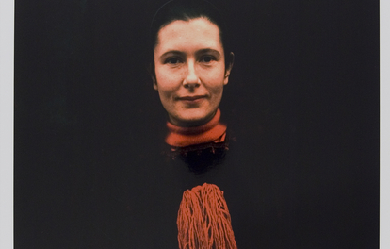
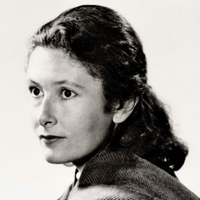
Denise Levertov (24 October 1923– 20 December 1997) was a British-born American poet. Levertov, who was educated at home, showed an enthusiasm for writing from an early age and studied ballet, art, piano and French as well as standard subjects. She wrote about the strangeness she felt growing up part Jewish, German, Welsh and English, but not fully belonging to any of these identities. She notes that it lent her a sense of being special rather than excluded: “I knew before I was ten that I was an artist-person and I had a destiny”.
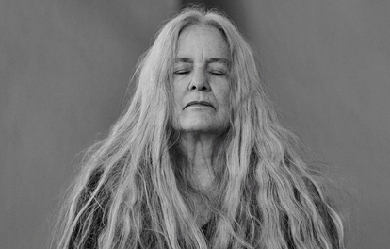
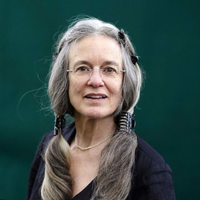
Sharon Olds, born November 19, 1942 in San Francisco, California, is an American poet recipient of many awards including the 2013 Pulitzer Prize in Poetry, the 1984 National Book Critics Circle Award, and the first San Francisco Poetry Center Award in 1980. She currently teaches creative writing at New York University.
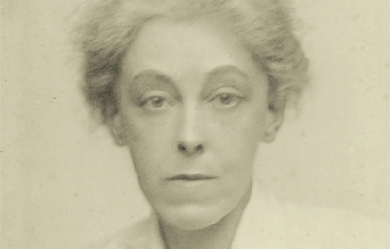
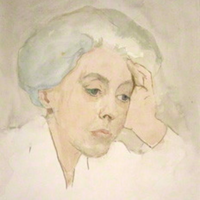
Charlotte Mary Mew (15 November 1869– 24 March 1928) was an English poetess, whose work spans the cusp between Victorian poetry and Modernism. She was born in Bloomsbury, London, the daughter of the architect Frederick Mew, who designed Hampstead town hall, and Anna Kendall.The marriage produced seven children. Charlotte, nicknamed Lotti by her family, attended Gower Street School, where she became infatuated with the school’s headmistress, Lucy Harrison, and lectures at University College London. Her father died in 1898 without making adequate provision for his family; two of her siblings suffered from mental illness, and were committed to institutions, and three others died in early childhood leaving Charlotte, her mother and her sister, Anne. Charlotte and Anne made a pact never to marry for fear of passing on insanity to their children. (One author calls Charlotte “almost certainly chastely lesbian)”. Through most of her adult life, Mew wore masculine attire and kept her hair short, adopting the appearance of a dandy.
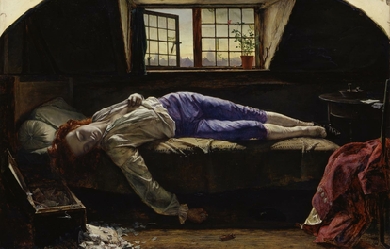
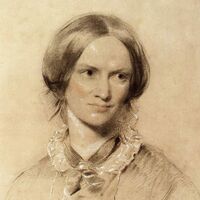
Charlotte Brontë (21 April 1816 – 31 March 1855) was an English novelist and poet, the eldest of the three Brontë sisters who survived into adulthood, whose novels are English literature standards. She wrote Jane Eyre under the pen name Currer Bell. Early life and education Charlotte was born in Thornton, Yorkshire in 1816, the third of six children, to Maria (née Branwell) and her husband Patrick Brontë (formerly surnamed Brunty or Prunty), an Irish Anglican clergyman. In 1820, the family moved a few miles to the village of Haworth, where Patrick had been appointed Perpetual Curate of St Michael and All Angels Church. Charlotte's mother died of cancer on 15 September 1821, leaving five daughters and a son to be taken care of by her sister Elizabeth Branwell. In August 1824, Charlotte was sent with three of her sisters, Emily, Maria, and Elizabeth, to the Clergy Daughters' School at Cowan Bridge in Lancashire (She used the school as the basis for Lowood School in Jane Eyre). The school's poor conditions, Charlotte maintained, permanently affected her health and physical development and hastened the deaths of her two elder sisters, Maria (born 1814) and Elizabeth (born 1815), who died of tuberculosis in June 1825. Soon after their deaths, her father removed Charlotte and Emily from the school. At home in Haworth Parsonage Charlotte acted as "the motherly friend and guardian of her younger sisters". She and her surviving siblings — Branwell, Emily, and Anne – created their own literary fictional worlds, and began chronicling the lives and struggles of the inhabitants of these imaginary kingdoms. Charlotte and Branwell wrote Byronic stories about their imagined country, "Angria", and Emily and Anne wrote articles and poems about "Gondal". The sagas they created were elaborate and convoluted (and still exist in partial manuscripts) and provided them with an obsessive interest during childhood and early adolescence, which prepared them for their literary vocations in adulthood. Charlotte continued her education at Roe Head in Mirfield, from 1831 to 1832, where she met her lifelong friends and correspondents, Ellen Nussey and Mary Taylor. Shortly after she wrote the novella The Green Dwarf (1833) using the name Wellesley. Charlotte returned to Roe Head as a teacher from 1835 to 1838. In 1839, she took up the first of many positions as governess to families in Yorkshire, a career she pursued until 1841. Politically a Tory, she preached tolerance rather than revolution. She held high moral principles, and, despite her shyness in company, was always prepared to argue her beliefs. Brussels In 1842 Charlotte and Emily travelled to Brussels to enrol in a boarding school run by Constantin Heger (1809–96) and his wife Claire Zoé Parent Heger (1804–87). In return for board and tuition, Charlotte taught English and Emily taught music. Their time at the boarding school was cut short when Elizabeth Branwell, their aunt who joined the family after the death of their mother to look after the children, died of internal obstruction in October 1842. Charlotte returned alone to Brussels in January 1843 to take up a teaching post at the school. Her second stay was not a happy one; she became lonely, homesick and deeply attached to Constantin Heger. She returned to Haworth in January 1844 and used her time at the boarding school as the inspiration for some experiences in The Professor and Villette. First publication In May 1846, Charlotte, Emily, and Anne self-financed the publication of a joint collection of poetry under the assumed names of Currer, Ellis and Acton Bell. These pseudonyms veiled the sisters' gender whilst preserving their real initials, thus Charlotte was "Currer Bell". "Bell" was the middle name of Haworth's curate, Arthur Bell Nicholls, whom Charlotte later married. On the decision to use noms de plume, Charlotte wrote: Averse to personal publicity, we veiled our own names under those of Currer, Ellis and Acton Bell; the ambiguous choice being dictated by a sort of conscientious scruple at assuming Christian names positively masculine, while we did not like to declare ourselves women, because — without at that time suspecting that our mode of writing and thinking was not what is called 'feminine' – we had a vague impression that authoresses are liable to be looked on with prejudice; we had noticed how critics sometimes use for their chastisement the weapon of personality, and for their reward, a flattery, which is not true praise. Although only two copies of the collection of poetry were sold, the sisters continued writing for publication and began their first novels, continuing to use their noms de plume when sending manuscripts to potential publishers. Jane Eyre Charlotte's first manuscript, The Professor, did not secure a publisher, although she was heartened by an encouraging response from Smith, Elder & Co of Cornhill, who expressed an interest in any longer works which "Currer Bell" might wish to send. Charlotte responded by finishing and sending a second manuscript in August 1847, and six weeks later Jane Eyre: An Autobiography, was published. Jane Eyre was a success, and initially received favourable reviews. There was speculation about the identity of Currer Bell, and whether Bell was a man or a woman. The speculation heightened on the subsequent publication of novels by Charlotte's sisters: Emily's Wuthering Heights by "Ellis Bell" and Anne's Agnes Grey by "Acton Bell". Accompanying the speculation was a change in the critical reaction to Charlotte's work; accusations began to be made that Charlotte's writing was "coarse", a judgement which was made more readily once it was suspected that "Currer Bell" was a woman. However sales of Jane Eyre continued to be strong, and may even have increased due to the novel's developing reputation as an 'improper' book. Shirley and family bereavements Following the success of Jane Eyre, in 1848 Charlotte began work on the manuscript of her second novel, Shirley. The manuscript was only partially completed when the Brontë household suffered a tragic turn of events, experiencing the deaths of three family members within eight months. In September 1848 Charlotte's only brother, Branwell, died of chronic bronchitis and marasmus exacerbated by heavy drinking, although Charlotte believed his death was due to tuberculosis. Branwell was a suspected "opium eater", a laudanum addict. Emily became seriously ill shortly after Branwell's funeral, and died of pulmonary tuberculosis in December 1848. Anne died of the same disease in May 1849. Charlotte was unable to write at this time. After Anne's death Charlotte resumed writing as a way of dealing with her grief, and Shirley was published in October 1849. Shirley deals with the themes of industrial unrest and the role of women in society. Unlike Jane Eyre, which is written from the first-person perspective of the main character, Shirley is written in the third-person and lacks the emotional immediacy of Jane Eyre, and reviewers found it less shocking. In society In view of the success of her novels, particularly Jane Eyre, Charlotte was persuaded by her publisher to visit London occasionally, where she revealed her true identity and began to move in a more exalted social circle, becoming friends with Harriet Martineau and Elizabeth Gaskell, and acquainted with William Makepeace Thackeray and G. H. Lewes. She never left Haworth for more than a few weeks at a time as she did not want to leave her ageing father's side. Thackeray’s daughter, the writer Anne Isabella Thackeray Ritchie recalled a visit to her father by Charlotte: …two gentlemen come in, leading a tiny, delicate, serious, little lady, with fair straight hair, and steady eyes. She may be a little over thirty; she is dressed in a little barège dress with a pattern of faint green moss. She enters in mittens, in silence, in seriousness; our hearts are beating with wild excitement. This then is the authoress, the unknown power whose books have set all London talking, reading, speculating; some people even say our father wrote the books – the wonderful books… The moment is so breathless that dinner comes as a relief to the solemnity of the occasion, and we all smile as my father stoops to offer his arm; for, genius though she may be, Miss Brontë can barely reach his elbow. My own personal impressions are that she is somewhat grave and stern, specially to forward little girls who wish to chatter… Every one waited for the brilliant conversation which never began at all. Miss Brontë retired to the sofa in the study, and murmured a low word now and then to our kind governess… the conversation grew dimmer and more dim, the ladies sat round still expectant, my father was too much perturbed by the gloom and the silence to be able to cope with it at all… after Miss Brontë had left, I was surprised to see my father opening the front door with his hat on. He put his fingers to his lips, walked out into the darkness, and shut the door quietly behind him… long afterwards… Mrs. Procter asked me if I knew what had happened… It was one of the dullest evenings [Mrs Procter] had ever spent in her life… the ladies who had all come expecting so much delightful conversation, and the gloom and the constraint, and how finally, overwhelmed by the situation, my father had quietly left the room, left the house, and gone off to his club. Friendship with Elizabeth Gaskell Charlotte sent copies of Shirley to leading authors of the day, including Elizabeth Gaskell. Gaskell and Charlotte met in August 1850 and began a friendship which, whilst not necessarily close, was significant in that Gaskell wrote Charlotte's biography after her death in 1855. The Life of Charlotte Brontë, was published in 1857 and was unusual at the time in that, rather than analysing its subject's achievements, it concentrated on the private details of Charlotte's life, in particular placing emphasis on aspects which countered the accusations of 'coarseness' which had been levelled at Charlotte's writing. Though frank in places, Gaskell was selective about which details she revealed; for example, she suppressed details of Charlotte's love for Heger, a married man, as being too much of an affront to contemporary morals and as a source of distress to Charlotte's still-living friends, father and husband. Gaskell also provided doubtful and inaccurate information about Patrick Brontë, claiming, for example, that he did not allow his children to eat meat. This is refuted by one of Emily Brontë's diary papers, in which she describes the preparation of meat and potatoes for dinner at the parsonage, as Juliet Barker points out in her biography, The Brontës. It has been argued that the particular approach of Mrs Gaskell transferred the focus of attention away from the 'difficult' novels, not just of Charlotte but all the sisters, and began a process of sanctification of their private lives. Villette Charlotte's third published novel, and the last to be published during her lifetime, was Villette, which came out in 1853. Its main themes include isolation, how such a condition can be borne, and the internal conflict brought about by societal repression of individual desire. Its main character, Lucy Snowe, travels abroad to teach in a boarding school in the fictional town of Villette, where she encounters a culture and religion different to her own, and where she falls in love with a man ('Paul Emanuel') whom she cannot marry. Her experiences result in her having a breakdown, but eventually she achieves independence and fulfilment in running her own school. Villette marked Charlotte's return to writing from a first-person perspective (that of Lucy Snowe), a technique she had used successfully in Jane Eyre. Another similarity to Jane Eyre was Charlotte's use of aspects from her own life as inspiration for fictional events, in particular reworking her time spent at the pensionnat in Brussels into Lucy spending time teaching at the boarding school, and falling in love with Constantin Heger into Lucy falling in love with 'Paul Emanuel'. Villette was acknowledged by the critics of the day as a potent and sophisticated piece of writing, although it was criticised for its 'coarseness' and not suitably 'feminine' in its portrayal of Lucy's desires. Illness and subsequent death In June 1854, Charlotte married Arthur Bell Nicholls, her father's curate and possibly the model for Jane Eyre's St. John Rivers. She became pregnant soon after the marriage. Her health declined rapidly during this time, and according to Gaskell, she was attacked by "sensations of perpetual nausea and ever-recurring faintness." Charlotte died, with her unborn child, on 31 March 1855, at the age of 38. Her death certificate gives the cause of death as phthisis (tuberculosis), but many biographers[who?] suggest she may have died from dehydration and malnourishment, caused by excessive vomiting from severe morning sickness or hyperemesis gravidarum. There is evidence to suggest that Charlotte died from typhus she may have caught from Tabitha Ackroyd, the Brontë household's oldest servant, who died shortly before her. Charlotte was interred in the family vault in the Church of St Michael and All Angels at Haworth. Posthumously, her first-written novel was published in 1857. The fragment she worked on in her last years in 1860 has been twice completed by recent authors, the more famous version being Emma Brown: A Novel from the Unfinished Manuscript by Charlotte Brontë by Clare Boylan in 2003. Much Angria material has appeared in published form since the author's death.
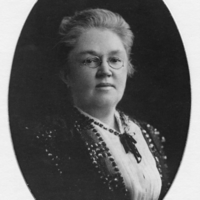
Katharine Lee Bates (August 12, 1859– March 28, 1929) was an American songwriter. She is remembered as the author of the words to the anthem “America the Beautiful”. She popularized “Mrs. Santa Claus” through her poem Goody Santa Claus on a Sleigh Ride (1889). Life and career Bates was born in Falmouth, Massachusetts, the daughter of Congregational pastor William Bates and his wife, Cornelia Frances Lee. She graduated from Wellesley High School in 1874 and from Wellesley College with a B.A. in 1880. She taught at Natick High School during 1880–81 and at Dana Hall School from 1885 until 1889. She returned to Wellesley as an instructor, then an associate professor 1891–93 when she was awarded an M.A. and became full professor of English literature. She studied at Oxford University during 1890–91. While teaching at Wellesley, she was elected a member of the newly formed Pi Gamma Mu honor society for the social sciences because of her interest in history and politics. Bates was a prolific author of many volumes of poetry, travel books, and children’s books. She popularized Mrs. Claus in her poem Goody Santa Claus on a Sleigh Ride from the collection Sunshine and other Verses for Children (1889). She contributed regularly to periodicals, sometimes under the pseudonym James Lincoln, including Atlantic Monthly, The Congregationalist, Boston Evening Transcript, Christian Century, Contemporary Verse, Lippincott’s and Delineator. A lifelong, active Republican, Bates broke with the party to endorse Democratic presidential candidate John W. Davis in 1924 because of Republican opposition to American participation in the League of Nations. She said: “Though born and bred in the Republican camp, I cannot bear their betrayal of Mr. Wilson and their rejection of the League of Nations, our one hope of peace on earth.” Bates never married. In 1910, when a colleague described “free-flying spinsters” as “fringe on the garment of life”, Bates answered: “I always thought the fringe had the best of it. I don’t think I mind not being woven in.” Bates died in Wellesley, Massachusetts, on September 28, 1929, and is buried in Oak Grove Cemetery at Falmouth. The historic home and birthplace of Bates in Falmouth, was sold to Ruth P. Clark in November 2013 for $1,200,000. Relationship with Katharine Coman Bates lived in Wellesley with Katharine Coman, who was a history and political economy teacher and founder of the Wellesley College School Economics department. The pair lived together for twenty-five years until Coman’s death in 1915. In 1922, Bates published Yellow Clover: A Book of Remembrance, a collection of poems written “to or about my Friend” Katharine Coman, some of which had been published in Coman’s lifetime. Some describe the couple as intimate lesbian partners, citing as an example Bates’ 1891 letter to Coman: "It was never very possible to leave Wellesley [for good], because so many love-anchors held me there, and it seemed least of all possible when I had just found the long-desired way to your dearest heart... Of course I want to come to you, very much as I want to come to Heaven." Others contest the use of the term lesbian to describe such a “Boston marriage”. Writes one: “We cannot say with certainty what sexual connotations these relationships conveyed. We do know that these relationships were deeply intellectual; they fostered verbal and physical expressions of love.” America the Beautiful The first draft of “America the Beautiful” was hastily jotted down in a notebook during the summer of 1893, which Bates spent teaching English at Colorado College in Colorado Springs, Colorado. Later she remembered: One day some of the other teachers and I decided to go on a trip to 14,000-foot Pikes Peak. We hired a prairie wagon. Near the top we had to leave the wagon and go the rest of the way on mules. I was very tired. But when I saw the view, I felt great joy. All the wonder of America seemed displayed there, with the sea-like expanse. The words to her only famous poem first appeared in print in The Congregationalist, a weekly journal, for Independence Day, 1895. The poem reached a wider audience when her revised version was printed in the Boston Evening Transcript on November 19, 1904. Her final expanded version was written in 1913. When a version appeared in her collection America the Beautiful, and Other Poems (1912), a reviewer in the New York Times wrote: “we intend no derogation to Miss Katharine Lee Bates when we say that she is a good minor poet.” The hymn has been sung to several tunes, but the familiar one is by Samuel A. Ward (1847–1903), written for his hymn “Materna” (1882). Honors The Bates family home on Falmouth’s Main Street is preserved by the Falmouth Historical Society. There is also a street named in her honor, “Katharine Lee Bates Road” in Falmouth. A plaque marks the site of the home where she lived as an adult on Centre Street in Newton, Massachusetts. The Katharine Lee Bates Elementary School on Elmwood Road in Wellesley, Massachusetts, and the Katharine Lee Bates Elementary School, founded in 1957 in Colorado Springs, Colorado, and Bates Hall dormitory at Wellesley College are named for her. The Katharine Lee Bates Professorship was established at Wellesley shortly after her death. Bates was inducted into the Songwriters Hall of Fame in 1970. Collections of Bates’s manuscripts are housed at the Arthur and Elizabeth Schlesinger Library on the History of Women in America, Radcliffe College; Falmouth Historical Society; Houghton Library, Harvard University; Wellesley College Archives. In 2012, she was listed as one of the 31 LGBT history “icons” by the organisers of LGBT History Month.
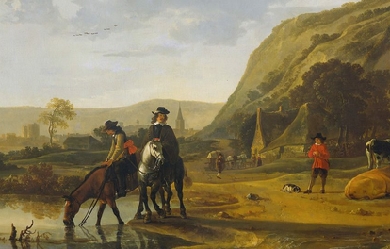
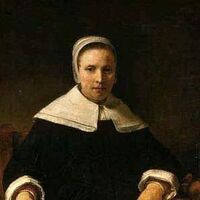
Anne Bradstreet was born in Northampton, England, in the year 1612, daughter of Thomas Dudley and Dorothy Yorke; Dudley, who had been a leader of volunteer soldiers in the English Reformation and Elizabethan Settlement, was then a steward to the Earl of Lincoln; Dorothy was a gentlewoman of noble heritage and she was also well educated. At the age of 16, Anne was married to Simon Bradstreet, a 25 year old assistant in the Massachusetts Bay Company and the son of a Puritan minister, who had been in the care of the Dudleys since the death of his father. Anne and her family emigrated to America in 1630 on the Arabella, one of the first ships to bring Puritans to New England in hopes of setting up plantation colonies. The journey was difficult; many perished during the three month journey, unable to cope with the harsh climate and poor living conditions, as sea squalls rocked the vessel, and scurvy brought on by malnutrition claimed their lives. Anne, who was a well educated girl, tutored in history, several languages and literature, was ill prepared for such rigorous travel, and would find the journey very difficult. Their trials and tribulations did not end upon their arrival, though, and many of those who had survived the journey, either died shortly thereafter, or elected to return to England, deciding they had suffered through enough. Thomas Dudley and his friend John Winthrop made up the Boston settlement's government; Winthrop was Governor, Dudley Deputy-Governor and Bradstreet Chief-Administrator. The colonists' fight for survival had become daily routine, and the climate, lack of food, and primitive living arrangements made it very difficult for Anne to adapt. She turned inwards and let her faith and imagination guide her through the most difficult moments; images of better days back in England, and the belief that God had not abandoned them helped her survive the hardships of the colony. Having previously been afflicted with smallpox, Anne would once again fall prey to illness as paralysis took over her joints; surprisingly, she did not let her predicament dim her passion for living, and she and her husband managed to make a home for themselves, and raise a family. Despite her poor health, she had eight children, and loved them dearly. Simon eventually came to prosper in the new land, and for a while it seemed things would not be so bad. Tragedy struck once more, when one night the Bradstreet home was engulfed in flames; a devastating fire which left the family homeless and devoid of personal belongings. It did not take too long for them to get back on their feet, thanks to their hard work, and to Simon's social standing in the community. While Anne and her husband were very much in love, Simon's political duties kept him traveling to various colonies on diplomatic errands, so Anne would spend her lonely days and nights reading from her father's vast collection of books, and educating her children. The reading would not only keep her from being lonely, but she also learned a great deal about religion, science, history, the arts, and medicine; most of all, reading helped her cope with life in New England. Anne Bradstreet was especially fond of poetry, which she had begun to write herself; her works were kept private though, as it was frowned upon for women to pursue intellectual enlightenment, let alone create and air their views and opinions. She wrote for herself, her family, and close circle of educated friends, and did not intend on publication. One of her closest friends, Anne Hutchinson, who was also a religious and educated woman had made the mistake of airing her views publicly, and was banished from her community. However, Anne's work would not remained unnoticed... Her brother-in-law, John Woodbridge, had secretly copied Anne's work, and would later bring it to England to have it published, albeit without her permission. Woodbridge even admitted to it in the preface of her first collection, "The Tenth Muse Lately Sprung Up in America, By a Gentlewoman of Those Parts", which was published in 1650. The book did fairly well in England, and was to be the last of her poetry to be published during her lifetime. All her other poems were published posthumously. Anne Bradstreet's poetry was mostly based on her life experience, and her love for her husband and family. One of the most interesting aspects of her work is the context in which she wrote; an atmosphere where the search for knowledge was frowned upon as being against God's will, and where women were relegated to traditional roles. Yet, we cAnneot help but feel the love she had for both God, and her husband, and her intense devotion to both, and to her family, despite the fact that she clearly valued knowledge and intellect, and was a free thinker, who could even be considered an early feminist. By Anne Bradstreet's health was slowly failing; she had been through many ailments, and was now afflicted with tuberculosis. Shortly after contracting the disease, she lost her daughter Dorothy to illness as well, but her will was strong, and perhaps, as a reflection of her own acceptance of death, she found solace in thinking of her daughter in a better place. Soon thereafter, Anne Bradstreet's long and difficult battle with illness would be at an end, and she passed away on September 16, 1672, in Andover, Massachusetts, at the age 60.
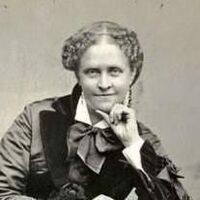
Helen Maria Hunt Jackson, born Helen Fiske (October 15, 1830 – August 12, 1885), was a United States writer who became an activist on behalf of improved treatment of Native Americans by the U.S. government. She detailed the adverse effects of government actions in her history A Century of Dishonor (1881). Her novel Ramona dramatized the federal government's mistreatment of Native Americans in Southern California and attracted considerable attention to her cause, although its popularity was based on its romantic and picturesque qualities rather than its political content. It was estimated to have been reprinted 300 times, and contributed to the growth of tourism in Southern California. Early years She was born Helen Fiske in Amherst, Massachusetts, the daughter of Nathan Welby Fiske and Deborah Waterman Vinal. She had two brothers, both of whom died after birth, and a sister Anne. Her father was a minister, author, and professor of Latin, Greek, and philosophy at Amherst College. Her mother died in 1844 when Helen was fourteen, and her father three years later. Her father provided for her education and arranged for an aunt to care for her. Fiske attended Ipswich Female Seminary and the Abbott Institute, a boarding school run by Reverend J.S.C. Abbott in New York City. She was a classmate of the poet Emily Dickinson, also from Amherst. The two corresponded for the rest of their lives, but few of their letters have survived. Marriage and family In 1852 at age 22, Fiske married U.S. Army Captain Edward Bissell Hunt. They had two sons, one of whom, Murray Hunt, died as an infant in 1854 of a brain disease. In 1863, her husband died in a military accident. Her second son, Rennie Hunt, died of diphtheria in 1865. About 1873-1874, Hunt met William Sharpless Jackson, a wealthy banker and railroad executive, while visiting at Colorado Springs, Colorado, at the resort of Seven Falls. They married in 1875 and she took the name Jackson, under which she was best known for her writings. She was a Unitarian. Career Helen Hunt began writing after the deaths of her family members. She published her early work anonymously, usually under the name "H.H." Ralph Waldo Emerson admired her poetry and used several of her poems in his public readings. He included five of them in his anthology Parnassus. She traveled widely. In the winter of 1873-1874 she was in Colorado Springs, Colorado, in search of a cure for tuberculosis. Here she met the man who would become her second husband. Over the next two years, she published three novels in the anonymous No Name Series, including Mercy Philbrick's Choice and Hetty's Strange History. In 1879 her interests turned to Native Americans after hearing a lecture in Boston by the Ponca Chief Standing Bear. He described the forcible removal of the Ponca from their Nebraska reservation and transfer to the Quapaw Reservation in Indian Territory, where they suffered from disease, climate and poor supplies. Upset about the mistreatment of Native Americans by government agents, Jackson became an activist. She started investigating and publicizing government misconduct, circulating petitions, raising money, and writing letters to the New York Times on behalf of the Ponca. A fiery and prolific writer, Jackson engaged in heated exchanges with federal officials over the injustices committed against American Indians. Among her special targets was U.S. Secretary of Interior Carl Schurz, whom she once called "the most adroit liar I ever knew." She exposed the government's violation of treaties with the American Indian tribes. She documented the corruption of US Indian agents, military officers, and settlers who encroached on and stole Indian lands. Jackson won the support of several newspaper editors who published her reports. Among her correspondents were editor William Hayes Ward of the New York Independent, Richard Watson Guilder of the Century Magazine, and publisher Whitelaw Reid of the New York Daily Tribune. Jackson also wrote a book, the first published under her own name, condemning state and federal Indian policy, and detailing the history of broken treaties. A Century of Dishonor (1881) called for significant reform in government policy toward Native Americans.[10] Jackson sent a copy to every member of Congress with a quote from Benjamin Franklin printed in red on the cover: "Look upon your hands: they are stained with the blood of your relations." The New York Times later wrote that she "soon made enemies at Washington by her often unmeasured attacks, and while on general lines she did some good, her case was weakened by her inability, in some cases, to substantiate the charges she had made; hence many who were at first sympathetic fell away." Jackson went to southern California for respite. Having been interested in the area's missions and the Mission Indians on an earlier visit, she began an in-depth study. While in Los Angeles, she met Don Antonio Coronel, former mayor of the city and a well-known authority on early Californio life in the area. He had served as inspector of missions for the Mexican government. Coronel told her about the plight of the Mission Indians after 1833. They were buffeted by the secularization policies of the Mexican government, as well as later U.S. policies, both of which led to their removal from mission lands. Under its original land grants, the Mexican government provided for resident Indians to continue to occupy such lands. After taking control of the territory in 1848, the U.S. generally disregarded such Mission Indian occupancy claims. In 1852, there were an estimated 15,000 Mission Indians in Southern California. By the time of Jackson's visit, they numbered fewer than 4,000. Coronel's account inspired Jackson to action. The U.S. Commissioner of Indian Affairs, Hiram Price, recommended her appointment as an Interior Department agent. Jackson's assignment was to visit the Mission Indians, ascertain the location and condition of various bands, and determine what lands, if any, should be purchased for their use. With the help of the US Indian agent Abbot Kinney, Jackson traveled throughout Southern California and documented conditions. At one point, she hired a law firm to protect the rights of a family of Saboba Indians facing dispossession from their land at the foot of the San Jacinto Mountains. In 1883, Jackson completed her 56-page report. It recommended extensive government relief for the Mission Indians, including the purchase of new lands for reservations and the establishment of more Indian schools. A bill embodying her recommendations passed the U.S. Senate but died in the House of Representatives. Jackson decided to write a novel to reach a wider audience. When she wrote Coronel asking for details about early California and any romantic incidents he could remember, she explained her purpose: "I am going to write a novel, in which will be set forth some Indian experiences in a way to move people's hearts. People will read a novel when they will not read serious books."[14] She was inspired by her friend Harriet Beecher Stowe's Uncle Tom's Cabin (1852). "If I could write a story that would do for the Indian one-hundredth part what Uncle Tom's Cabin did for the Negro, I would be thankful the rest of my life," she wrote. Although Jackson started an outline in California, she began writing the novel in December 1883 in her New York hotel room, and completed it in about three months. Originally titled In The Name of the Law, she published it as Ramona (1884). It featured Ramona, an orphan girl who was half Indian and half Scots, raised in Spanish Californio society, and her Indian husband Alessandro, and their struggles for land of their own. The characters were based on people known by Jackson and incidents which she had encountered. The book achieved rapid success among a wide public and was popular for generations; it was estimated to have been reprinted 300 times. Its romantic story also contributed to the growth of tourism to Southern California. Encouraged by the popularity of her book, Jackson planned to write a children's story about Indian issues, but did not live to complete it. Her last letter was written to President Grover Cleveland and said: "From my death bed I send you message of heartfelt thanks for what you have already done for the Indians. I ask you to read my Century of Dishonor. I am dying happier for the belief I have that it is your hand that is destined to strike the first steady blow toward lifting this burden of infamy from our country and righting the wrongs of the Indian race." Jackson died of stomach cancer in 1885 in San Francisco, California. Her husband arranged for her burial on a one-acre plot on a high plateau overlooking Colorado Springs, Colorado. Her grave was later moved to Evergreen Cemetery in Colorado Springs. At the time of her death, her estate was valued at $12,642. She used her married names, Helen Hunt and Helen Jackson, but she is most often referred to as Helen Hunt Jackson. The New York Times referred to her as Helen Hunt Jackson in 1885, reporting on her final illness, and in 1886, reporting on visitors to her grave. The name was used during her lifetime by others, though she disliked the practice. "It is not proper to keep one's first married name, after a second marriage", she wrote to Moncure Conway. To Caroline Healey Dall, she admitted she was "positively waging war" against being called "Helen Hunt Jackson". Critical response and legacy Jackson's A Century of Dishonor remains in print, as does a collection of her poetry. A New York Times reviewer said of Ramona that "by one estimate, the book has been reprinted 300 times." One year after Jackson's death the North American Review called Ramona "unquestionably the best novel yet produced by an American woman" and named it, along with Uncle Tom's Cabin, one of two most ethical novels of the 19th century. Sixty years after its publication, 600,000 copies had been sold. There have been over 300 reissues to date and the book has never been out of print. The novel has been adapted for other media, including three films, stage, and television productions. Valery Sherer Mathes assessed the writer and her work: Ramona may not have been another Uncle Tom's Cabin, but it served, along with Jackson's writings on the Mission Indians of California, as a catalyst for other reformers ....Helen Hunt Jackson cared deeply for the Indians of California. She cared enough to undermine her health while devoting the last few years of her life to bettering their lives. Her enduring writings, therefore, provided a legacy to other reformers, who cherished her work enough to carry on her struggle and at least try to improve the lives of America's first inhabitants. Her friend Emily Dickinson once described her limitations: "she has the facts but not the phosphorescence." In a review of a film version, a journalist wrote about the novel, calling it "the long and lugubrious romance by Helen Hunt Jackson, over which America wept unnumbered gallons in the eighties and nineties," and complained of "the long, uneventful stretches of the novel."[26] In reviewing the history of her publisher, Houghton Mifflin, a 1970 reviewer noted that Jackson typified the house's success: "Middle aged, middle class, middlebrow." Jackson herself wrote, "My Century of Dishonor and Ramona are the only things I have done of which I am glad.... They will live, and... bear fruit." A portion of Jackson's Colorado home has been reconstructed in the Colorado Springs Pioneers Museum and furnished with her possessions.
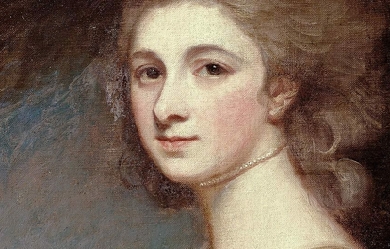
Mary Robinson (née Darby) (27 November 1757? – 26 December 1800) was an English actress, poet, dramatist, novelist, and celebrity figure. During her lifetime she was known as "the English Sappho".[1][2] She earned her nickname "Perdita" for her role as Perdita (heroine of Shakespeare's The Winter's Tale) in 1779. She was the first public mistress of King George IV while he was still Prince of Wales. Biography Early life Robinson was born in Bristol, England to John Darby, a naval captain, and his wife Hester (née Seys). In her memoirs, Robinson gives her birth in 1758 but the year 1757 seems more likely according to recently published research (see appendix to Byrne, 2005). Her father deserted her mother and took on a mistress when Robinson was still a child. The family hoped for a reconciliation, but Captain Darby made it clear that this was not going to happen. Without the support of her husband, Hester Darby supported herself and the five children born of the marriage by starting a school for young girls in Little Chelsea, London, (where Robinson taught by her 14th birthday). However, during one of his brief returns to the family, Captain Darby had the school closed (which he was entitled to do by English law). Robinson, who at one point attended a school run by the social reformer Hannah More, came to the attention of actor David Garrick. Marriage Hester Darby encouraged her daughter to accept the proposal of an articled clerk, Thomas Robinson, who claimed to have an inheritance. Mary was against this idea; however, after being stricken ill, and watching him take care of her and her younger brother, she felt that she owed him, and she did not want to disappoint her mother who was pushing for the engagement. After the early marriage, Robinson discovered that her husband did not have an inheritance. He continued to live an elaborate lifestyle, however, and had multiple affairs that he made no effort to hide. Subsequently, Mary supported their family. After her husband squandered their money, the couple fled to Wales (where Robinson’s only daughter, Mary Elizabeth, was born in November). Her husband was imprisoned for debt in the Fleet Prison where she accompanied him for many months. During this time, Mary Robinson found a patron in Georgiana Cavendish, Duchess of Devonshire, who sponsored the publication of Robinson’s first volume of poems, Captivity. Theatre After her husband obtained his release from prison, Robinson decided to return to the theatre. She launched her acting career and took to the stage, playing Juliet, at Drury Lane Theatre in December 1776. Robinson was best known for her facility with the 'breeches parts’, her performances as Viola in William Shakespeare’sTwelfth Night and Rosalind in As You Like It won her extensive praise. But she gained popularity with playing in Florizel and Perdita, an adaptation of Shakespeare, with the role of Perdita (heroine of The Winter’s Tale) in 1779. It was during this performance that she attracted the notice of the young Prince of Wales, later King George IV of the United Kingdom. He offered her twenty thousand pounds to become his mistress. With her new social prominence, Robinson became a trend-setter in London, introducing a loose, flowing muslin style of gown based upon Grecian statuary that became known as the Perdita. It took Robinson a considerable amount of time to decide to leave her husband for the Prince, as she did not want to be seen by the public as that type of woman. Throughout much of her life she struggled to live in the public eye and also to stay true to the values in which she believed. She eventually gave in to her desires to be with a man whom she thought would treat her better than Mr. Robinson. However, the Prince ended the affair in 1781, refusing to pay the promised sum. “Perdita” Robinson was left to support herself through an annuity promised by the Crown (but rarely paid), in return for some letters written by the Prince, and through her writings. Later life and death Mary Robinson, who now lived separately from her husband, went on to have several love affairs, most notably with Banastre Tarleton, a soldier who had recently distinguished himself fighting in the American War of Independence. Their relationship survived for the next 15 years, through Tarleton’s rise in military rank and his concomitant political successes, through Mary’s own various illnesses, through financial vicissitudes and the efforts of Tarleton’s own family to end the relationship. They had no children, although Robinson had a miscarriage. However, in the end, Tarleton married Susan Bertie, an heiress and an illegitimate daughter of the young 4th Duke of Ancaster, and niece of his sisters Lady Willoughby de Eresby and Lady Cholmondeley. In 1783, Robinson suffered a mysterious illness that left her partially paralysed. Biographer Paula Byrne speculates that a streptococcal infection resulting from a miscarriage led to a severe rheumatic fever that left her disabled for the rest of her life. From the late 1780s, Robinson became distinguished for her poetry and was called “the English Sappho”. In addition to poems, she wrote eight novels, three plays, feminist treatises, and an autobiographical manuscript that was incomplete at the time of her death. Like her contemporary Mary Wollstonecraft, she championed the rights of women and was an ardent supporter of the French Revolution. She died in late 1800 in poverty at the age of 43, having survived several years of ill health, and was survived by her daughter, who was also a published novelist. Literature After years of scholarly neglect, Robinson’s literary afterlife continues apace. While most of the early literature written about Robinson focused on her sexuality, emphasizing her affairs and fashions, she began to receive the attention of feminists and literary scholars in the 1990s. In addition to regaining literary and cultural notability, she has re-attained a degree of celebrity in recent years when several biographies of her appeared, including one by Paula Byrne entitled Perdita: The Literary, Theatrical, and Scandalous Life of Mary Robinson that became a top-ten best-seller after being selected for the Richard & Judy Book Club. Poetry Poems (1775) Captivity, A Poem and Celadon and Lydia, a Tale (1777) Poems (Vol. 1, 1791 / Vol. 2, 1793) London’s Summer Morning (1795) Sappho and Phaon: In a Series of Legitimate Sonnets (1796) Lyrical Tales (1800) Novels Vancenza; or, The Dangers of Credulity (1792) The Widow; or, A Picture of Modern Times (1794) Angelina; A Novel (1796) Hubert de Sevrac, A Romance, of the Eighteenth Century (1796) Walsingham: or, The Pupil of Nature, A Domestic Story (1797) The False Friend; A Domestic Story (1799) The Natural Daughter. With Portraits of the Leadenhead Family. A Novel (1799) Jasper, A Fragment [published posthumously in Memoirs of the Late Mrs. Robinson, Written by Herself (1801)] Dramas The Lucky Escape, A Comic Opera (Drury Lane, 1778) Nobody: A Comedy in Two Acts (Drury Lane, 1794) The Sicilian Lover: A Tragedy in Five Acts (never performed) Socio-political texts Impartial Reflections of the Present Situation of the Queen of France (1791) A Letter to the Women of England, on the Injustice of Mental Subordination (1799) Memoir Robinson, Mary [and Maria Elizabeth Robinson]. Memoirs of the Late Mrs. Robinson, Written by Herself. With Some Posthumous Pieces. 4 vols. London, 1801. Biographies of Robinson Byrne, Paula. Perdita: The Literary, Theatrical, and Scandalous Life of Mary Robinson. New York: Random House, 2004. Chisholm, Hugh, ed. (1911). “Robinson, Mary”. Encyclopædia Britannica 23 (11th ed.). Cambridge University Press. Davenport, Hester. The Prince’s Mistress: Perdita, a Life of Mary Robinson. Stroud: Sutton Publishing, 2004. Gristwood, Sarah. Perdita: Royal Mistress, Writer, Romantic. London: Bantam, 2005. Memoirs of Mary Robinson 1895. Knight, John Joseph (1897). “Robinson, Mary”. In Lee, Sidney. Dictionary of National Biography 49. London: Smith, Elder & Co. Ledoux, Ellen Malenas. “Florizel and Perdita Affair, 1779–80.” BRANCH: Britain, Representation and Nineteenth-Century History. Ed. Dino Franco Felluga. Extension of Romanticism and Victorianism on the Net. Web. 2 June 2013. Robinson, Mary [and Maria Elizabeth Robinson]. Memoirs of the Late Mrs. Robinson, Written by Herself. With Some Posthumous Pieces. 4 vols. London, 1801. Levy, Martin J. "Robinson, Mary [Perdita] (1756/1758?–1800)". Oxford Dictionary of National Biography (online ed.). Oxford University Press. doi:10.1093/ref:odnb/23857. (Subscription or UK public library membership required.) Resources on Robinson and her literature Brewer, William D., ed. The Works of Mary Robinson. 8 vols. Pickering & Chatto, 2009–2010. Gamer, Michael, and Terry F. Robinson. “Mary Robinson and the Dramatic Art of the Comeback.” Studies in Romanticism 48.2 (Summer 2009): 219–256. Pascoe, Judith. Mary Robinson: Selected Poems. Peterborough, ON: Broadview Press, 1999. Robinson, Daniel. The Poetry of Mary Robinson: Form and Fame. New York: Palgrave Macmillan, 2011. Robinson, Terry F. “Introduction.” Nobody. By Mary Robinson. Romantic Circles. Web. March 2013. Fictional works about Robinson Elyot, Amanda. All For Love: The Scandalous Life and Times of Royal Mistress Mary Robinson. A Novel. 2008. Lightfoot, Freda. Lady of Passion: The Story of Mary Robinson. 2013. Plaidy, Jean. Perdita’s Prince. 1969.
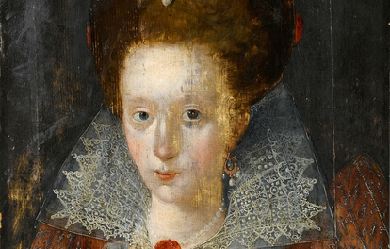
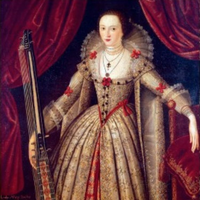
Lady Mary Wroth (18 October 1587– 1651/3) was an English poetess of the Renaissance. A member of a distinguished literary family, Lady Wroth was among the first female British writers to have achieved an enduring reputation. She is perhaps best known for having written The Countess of Montgomery’s Urania, the first extant prose romance by an English woman, and for Pamphilia to Amphilanthus, the second known sonnet sequence by an English woman. Wroth’s works also include Love’s Victory, a pastoral closet drama.
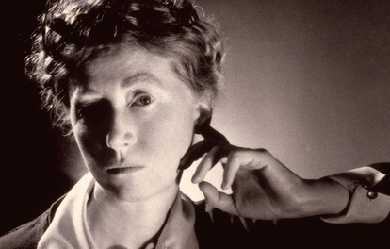
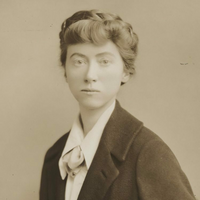
Born near St. Louis, Missouri, on November 15, 1887, Marianne Moore was raised in the home of her grandfather, a Presbyterian pastor. After her grandfather's death, in 1894, Moore and her family stayed with other relatives, and in 1896 they moved to Carlisle, Pennsylvania. She attended Bryn Mawr College and received her B.A. in 1909. Following graduation, Moore studied typing at Carlisle Commercial College, and from 1911 to 1915 she was employed as a school teacher at the Carlisle Indian School. In 1918, Moore and her mother moved to New York City, and in 1921, she became an assistant at the New York Public Library. She began to meet other poets, such as William Carlos Williams and Wallace Stevens, and to contribute to the Dial, a prestigious literary magazine. She served as acting editor of the Dial from 1925 to 1929. Along with the work of such other members of the Imagist movement as Ezra Pound, Williams, and H. D., Moore's poems were published in the Egoist, an English magazine, beginning in 1915. In 1921, H.D. published Moore's first book, Poems, without her knowledge. Moore was widely recognized for her work; among her many honors were the Bollingen prize, the National Book Award, and the Pulitzer Prize. She wrote with the freedom characteristic of the other modernist poets, often incorporating quotes from other sources into the text, yet her use of language was always extraordinarily condensed and precise, capable of suggesting a variety of ideas and associations within a single, compact image. In his 1925 essay "Marianne Moore," William Carlos Williams wrote about Moore's signature mode, the vastness of the particular: "So that in looking at some apparently small object, one feels the swirl of great events." She was particularly fond of animals, and much of her imagery is drawn from the natural world. She was also a great fan of professional baseball and an admirer of Muhammed Ali, for whom she wrote the liner notes to his record, I Am the Greatest! Deeply attached to her mother, she lived with her until Mrs. Moore's death in 1947. Marianne Moore died in New York City in 1972. Poetry Collected Poems (1951) Like a Bulwark (1956) Nevertheless (1944) O to Be a Dragon (1959) Observations (1924) Poems (1921) Selected Poems (1935) Tell Me, Tell Me (1966) The Arctic Fox (1964) The Complete Poems of Marianne Moore (1967) The Pangolin and Other Verse (1936) What Are Years? (1941) Prose A Marianne Moore Reader (1961) Predilections (1955) The Complete Prose of Marianne Moore (1987)
_by_Sir_Hubert_von_Herkomer.jpg)
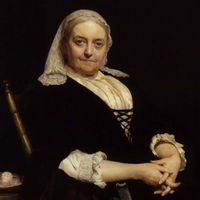
Dinah Maria Craik (/kreɪk/; born Dinah Maria Mulock, also often credited as Miss Mulock or Mrs. Craik) (20 April 1826– 12 October 1887) was an English novelist and poet. Life Mulock was born at Stoke-on-Trent to Dinah and Thomas Mulock and raised in Newcastle-under-Lyme, Staffordshire, where her father was then minister of a small congregation. Her childhood and early youth were much affected by his unsettled fortunes, but she obtained a good education from various quarters and felt called to be a writer. She came to London about 1846, much at the same time as two friends, Alexander Macmillan and Charles Edward Mudie. Introduced by Camilla Toulmin to Westland Marston, she rapidly made friends in London, and found great encouragement for the stories for the young. In 1865 she married George Lillie Craik a partner with Alexander Macmillan in the publishing house of Macmillan & Company, and nephew of George Lillie Craik. They adopted a foundling baby girl, Dorothy, in 1869. At Shortlands, near Bromley, Kent, while in a period of preparation for Dorothy’s wedding, she died of heart failure on 12 October 1887, aged 61. Her last words were reported to have been: “Oh, if I could live four weeks longer! but no matter, no matter!” Her final book, An Unknown Country, was published by Macmillan in 1887, the year of her death. Dorothy married Alexander Pilkington in 1887 but they divorced in 1911 and she went on to marry Captain Richards of Macmine Castle. She and Alexander had just one son John Mulock Pilkington. John married Freda Roskelly and they had a son and daughter. Works * Mulock’s early success began with the novel Cola Monti (1849), and in the same year she produced her first three-volume novel, The Ogilvies, to great success. It was followed in 1850 by Olive, then by The Head of the Family in 1851 and Agatha’s Husband in 1853, in which the author used her recollections of East Dorset. Mulock published the fairy story Alice Learmont in 1852, and collected numerous short stories from periodicals under the title of Avillion and other Tales in 1853. A similar collection appeared in 1857 under the title of Nothing New. * Thoroughly established in public favour as a successful author, Mulock took a cottage at Wildwood, North End, Hampstead, and joined an extensive social circle. Her personal attractions were at this period of her life considerable, and people kindly judged her simple cordiality, staunch friendliness, and thorough goodness of heart. In 1857 she published the work by which she will be principally remembered, John Halifax, Gentleman, a presentation of the ideals of English middle-class life. Mulock’s next important work, A Life for a Life (1859), made more money and was perhaps at the time more widely read than John Halifax, and was followed by Mistress and Maid (1863) and Christian’s Mistake (1865), followed by didactic works such as A Woman’s Thoughts about Women and Sermons out of Church. Another collection, titled The Unkind Word and Other Stories, included a scathing criticism of Benjamin Heath Malkin for overworking his son Thomas, a child prodigy who died at seven. Later on, Craik returned to more fanciful tales and achieved a great success with The Little Lame Prince (1874). In 1881 she published a collection of her earlier poems under the title Poems of Thirty Years, New and Old; some, such as Philip my King addressed to her godson Philip Bourke Marston and Douglas, Douglas, Tender and True achieved a wide popularity. Reception * Richard Garnett holds that “the genuine passion that filled her early works of fiction had not unnaturally faded out of middle life”, replaced by didacticism. To Garnett, Craik’s increasing self-awareness led to this. Garnett judges Craik’s poetry as “a woman’s poems, tender, domestic, and sometimes enthusiastic, always genuine song, and the product of real feeling”.
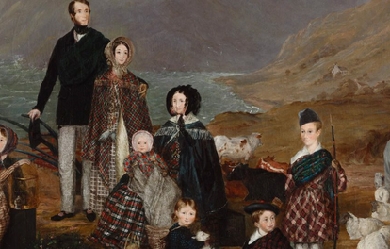
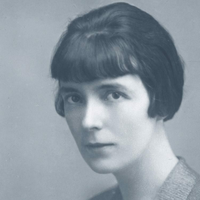
Kathleen Mansfield Murry (14 October 1888– 9 January 1923) was a prominent New Zealand modernist short story writer who was born and brought up in colonial New Zealand and wrote under the pen name of Katherine Mansfield. At 19, Mansfield left New Zealand and settled in the United Kingdom, where she became a friend of modernist writers such as D.H. Lawrence and Virginia Woolf. In 1917 she was diagnosed with extrapulmonary tuberculosis, which led to her death at the age of 34. Biography Early life Mansfield was born Kathleen Mansfield Beauchamp in 1888 into a socially prominent family in Wellington, New Zealand. Her father was a banker and she was a cousin of the author Countess Elizabeth von Arnim. She had two older sisters, a younger sister and a younger brother, born in 1894. Her father, Harold Beauchamp, became the chairman of the Bank of New Zealand and was knighted. Her grandfather was Arthur Beauchamp, who briefly represented the Picton electorate in Parliament. In 1893 the Mansfield family moved from Thorndon to Karori, where Mansfield spent the happiest years of her childhood. She used some of her memories of this time as an inspiration for the “Prelude” story. Her first published stories appeared in the High School Reporter and the Wellington Girls’ High School magazine (the family returned to Wellington proper in 1898), in 1898 and 1899. In 1902 she became enamoured of a cellist, Arnold Trowell, although the feelings were largely unreciprocated. Mansfield herself was an accomplished cellist, having received lessons from Trowell’s father. Mansfield wrote in her journals of feeling alienated in New Zealand, and of how she had become disillusioned because of the repression of the Māori people. Māori characters are often portrayed in a sympathetic or positive light in her later stories, such as “How Pearl Button Was Kidnapped”. In 1903 she moved to London, where she attended Queen’s College along with her sisters. Mansfield recommenced playing the cello, an occupation that she believed she would take up professionally, but she also began contributing to the college newspaper with such dedication that she eventually became its editor. She was particularly interested in the works of the French Symbolists and Oscar Wilde, and she was appreciated among her peers for her vivacious and charismatic approach to life and work. She met fellow writer Ida Baker (also known as Lesley Moore), a South African, at the college, and they became lifelong friends. Mansfield did not become involved in much political activity when she lived in London. For example, she did not actively support the suffragette movement in the UK (women in New Zealand had gained the right to vote in 1893). Mansfield travelled in continental Europe between 1903 and 1906, staying mainly in Belgium and Germany. After finishing her schooling in England, she returned to New Zealand in 1906, and only then began to write short stories. She had several works published in the Native Companion (Australia), her first paid writing work, and by this time she had her heart set on becoming a professional writer. It was also the first occasion on which she used the pseudonym “K. Mansfield”. She rapidly wearied of the provincial New Zealand lifestyle and of her family, and two years later headed again for London. Her father sent her an annual allowance of 100 pounds for the rest of her life. In later years she expressed both admiration and disdain for New Zealand in her journals, but she was never able to return there because of her tuberculosis. Mansfield had two romantic relationships with women that are notable for their pre-eminence in her journal entries. She continued to have male lovers, and attempted to repress her feelings at certain times. Her first same-gender romantic relationship was with Maata Mahupuku (sometimes known as Martha Grace), a wealthy young Māori woman whom she had first met at Miss Swainson’s school in Wellington, and then again in London in 1906. In June 1907 she wrote: “I want Maata—I want her as I have had her—terribly. This is unclean I know but true.” She often referred to Maata as Carlotta. She wrote about Maata in several short stories. Maata married in 1907 but it is claimed that she sent money to Mansfield in London. The second relationship, with Edith Kathleen Bendall, took place from 1906 to 1908. Mansfield also professed her adoration for her in her journals. Return to London Back in London in 1908, Mansfield quickly fell into a bohemian way of life. She published only one story and one poem during her first 15 months there. Mansfield sought out the Trowell family for companionship, and while Arnold was involved with another woman Mansfield embarked on a passionate affair with his brother, Garnet. By early 1909 she had become pregnant by Garnet, though Trowell’s parents disapproved of the relationship and the two broke up. She hastily entered into a marriage with George Bowden, a singing teacher 11 years older than she; they were married on 2 March, but she left him the same evening, before the marriage could be consummated. After a brief reunion with Garnet, Mansfield’s mother, Annie Beauchamp, arrived in 1909. She blamed the breakdown of the marriage to Bowden on a lesbian relationship between Mansfield and Baker, and she quickly had her daughter despatched to the spa town of Bad Wörishofen in Bavaria, Germany. Mansfield miscarried after attempting to lift a suitcase on top of a cupboard. It is not known whether her mother knew of this miscarriage when she left shortly after arriving in Germany, but she cut Mansfield out of her will. Mansfield’s time in Bavaria had a significant effect on her literary outlook. In particular, she was introduced to the works of Anton Chekhov. She returned to London in January 1910. She then published more than a dozen articles in A.R. Orage’s socialist magazine The New Age, and became a friend and lover of Beatrice Hastings, who lived with Orage. Her experiences of Germany formed the foundation of her first published collection, In a German Pension, (1911), which she later described as “immature”. Meeting Murry Soon afterwards Mansfield submitted a lightweight story to a new avant-garde magazine called Rhythm. The piece was rejected by the magazine’s editor, John Middleton Murry, who requested something darker. Mansfield responded with “The Woman at the Store”, a tale of murder and mental illness. Mansfield was inspired at this time by Fauvism. In 1911 Mansfield and Murry began a relationship that culminated in their marriage in 1918, although she left him twice, in 1911 and 1913. In October 1912 the publisher of Rhythm, Charles Granville (sometimes known as Stephen Swift), absconded to Europe and left Murry responsible for the debts the magazine had accumulated. Mansfield pledged her father’s allowance towards the magazine, but it was discontinued, being reorganised as The Blue Review in 1913 and folding after three issues. Mansfield and Murry were persuaded by their friend Gilbert Cannan to rent a cottage next to his windmill in Cholesbury, Buckinghamshire in 1913, in an attempt to alleviate Mansfield’s ill health. In January 1914 the couple moved to Paris, in the hope that a change of setting would make writing easier for both of them. Mansfield wrote only one story during her time there ("Something Childish But Very Natural") before Murry was recalled to London to declare bankruptcy. In 1914 Mansfield had a brief affair with the French writer Francis Carco. Her visit to him in Paris in February 1915 is retold in one of her short stories, “An Indiscreet Journey”. Mansfield’s life and work were changed by the death in 1915 of her beloved younger brother, Leslie Heron “Chummie” Beauchamp, as a New Zealand soldier in France. She began to take refuge in nostalgic reminiscences of their childhood in New Zealand. In a poem describing a dream she had shortly after his death, she wrote By the remembered stream my brother stands Waiting for me with berries in his hands... “These are my body. Sister, take and eat.” At the beginning of 1917 Mansfield and Murry separated, although he continued to visit her at her new apartment. Baker, whom Mansfield often called, with a mixture of affection and disdain, her “wife”, moved in with her shortly afterwards. Mansfield entered into her most prolific period of writing after 1916, which began with several stories, including “Mr Reginald Peacock’s Day” and “A Dill Pickle”, being published in The New Age. Woolf and her husband, Leonard, who had recently set up Hogarth Press, approached her for a story, and Mansfield presented “Prelude”, which she had begun writing in 1915 as “The Aloe”. The story depicts a family of New Zealanders moving house. In December 1917 Mansfield was diagnosed with tuberculosis. Rejecting the idea of staying in a sanatorium on the grounds that it would cut her off from writing, she moved abroad to avoid the English winter. She stayed at a half-deserted and cold hotel in Bandol, France, where she became depressed but continued to produce stories, including "Je ne parle pas français". “Bliss”, the story that lent its name to her second collection of stories in 1920, was also published in 1918. Her health continued to deteriorate and she had her first lung haemorrhage in March. By April Mansfield’s divorce from Bowden had been finalised, and she and Murry married, only to part again two weeks later. They came together again, however, and in March 1919 Murry became editor of Athenaeum, for which Mansfield wrote more than 100 book reviews, collected posthumously as Novels and Novelists. During the winter of 1918–19 she and Baker stayed in a villa in San Remo, Italy. Their relationship came under strain during this period, and after she wrote to Murry to express her feelings of depression he stayed over Christmas. Although her relationship with Murry became increasingly distant after 1918 and the two often lived apart, this intervention of his spurred her on, and she wrote “The Man Without a Temperament”, the story of an ill wife and her long-suffering husband. Mansfield followed her first collection of short stories, Bliss (1920), with another collection The Garden Party, published in 1922. Final years Mansfield spent her last years seeking increasingly unorthodox cures for her tuberculosis. In February 1922 she consulted the Russian physician Ivan Manoukhin, whose “revolutionary” treatment, which consisted of bombarding her spleen with X-rays, caused Mansfield to develop heat flashes and numbness in her legs. In October 1922 Mansfield moved to Georges Gurdjieff’s Institute for the Harmonious Development of Man in Fontainebleau, France, where she was put under the care of Olgivanna Lazovitch Hinzenburg (who later married Frank Lloyd Wright). As a guest rather than a pupil of Gurdjieff, Mansfield was not required to take part in the rigorous routine of the Institute, but she spent much of her time there with her mentor, Alfred Richard Orage and her last letters inform Murry of her attempts to apply some of Gurdjieff’s teachings to her own life. Mansfield suffered a fatal pulmonary haemorrhage in January 1923, after running up a flight of stairs. She died on 9 January and was buried in a cemetery in Avon. Mansfield was a prolific writer in the final years of her life. Much of her work remained unpublished at her death, and Murry took on the task of editing and publishing it in two additional volumes of short stories (The Dove’s Nest in 1923 and Something Childish in 1924), a volume of Poems, The Aloe, Novels and Novelists, and collections of her letters and journals. Legacy The following high schools in New Zealand have a house named after her: Rangitoto College, Westlake Girls’ High School, Macleans College all in Auckland, Tauranga Girls’ College in Tauranga, Wellington Girls’ College in Wellington, Rangiora High School in North Canterbury and Southland Girls’ High School in Invercargill. She has been honoured at Karori Normal School in Wellington which has a stone monument dedicated to her with a plaque commemorating her work and her time at the school. She has also been recognised at Samuel Marsden Collegiate School (previously Fitzherbert Tce School) with a painting and award in her name. There is a Park dedicated to her in Thorndon, Wellington. A street in Menton, France, where she lived and wrote, is named after her and a Fellowship is offered annually to enable a New Zealand writer to work at her former home, the Villa Isola Bella. New Zealand’s pre-eminent short story competition is also named in her honour. She was the subject of the 1973 BBC miniseries A Picture of Katherine Mansfield starring Vanessa Redgrave. The six-part series included adaptations of Mansfield’s life and of her short stories. In 2011, a biopic film titled “Bliss”, was made of her early beginnings as a writer in New Zealand, played by Kate Elliott and featured on the TVNZ TV-movie series “Sunday Theatre” that aired on 28 August 2011.
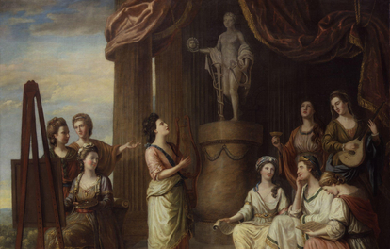
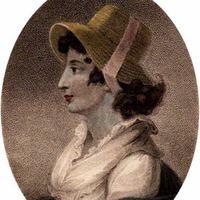
Anna Laetitia Barbauld (20 June 1743 – 9 March 1825) was a prominent English poetess, essayist, literary critic, editor and children’s author. A “woman of letters” who published in multiple genres, Barbauld had a successful writing career at a time when female professional writers were rare. She was a noted teacher at the Palgrave Academy and an innovative children’s writer; her primers provided a model for pedagogy for more than a century. Her essays demonstrated that it was possible for a woman to be publicly engaged in politics, and other women authors such as Elizabeth Benger emulated her. Barbauld’s literary career spanned numerous periods in British literary history: her work promoted the values of both the Enlightenment and Sensibility, and her poetry was foundational to the development of British Romanticism. Barbauld was also a literary critic, and her anthology of 18th-century British novels helped establish the canon as known today.
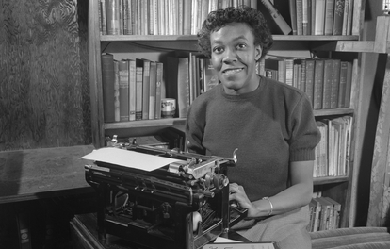
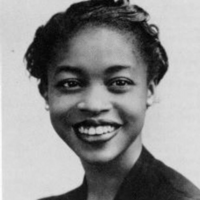
Gwendolyn Elizabeth Brooks (June 7, 1917– December 3, 2000) was an American poet and teacher. She was the first African-American woman to win a Pulitzer prize when she was awarded the Pulitzer Prize for Poetry in 1950 for her second collection, Annie Allen. Throughout her career she received many more honors. She was appointed Poet Laureate of Illinois in 1968, a position held until her death and Poet Laureate Consultant in Poetry to the Library of Congress in 1985.

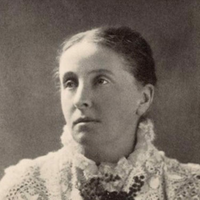
Ada Cambridge (21 November 1844 – 19 July 1926), later known as Ada Cross, was an English-born Australian writer. Overall she wrote more than twenty-five works of fiction, three volumes of poetry and two autobiographical works.[1] Many of her novels were serialised in Australian newspapers, and were never published in book form. While she was known to friends and family by her married name, Ada Cross, she was known to her newspaper readers as A.C.. Later in her career she reverted to her maiden name, Ada Cambridge, and it is thus by this name that she is known.[2] Ada was born at St Germans, Norfolk, the second child of Thomasine and Henry Cambridge, a gentleman farmer.[3] She was educated by governesses, an experience she abhorred. She wrote in a book of reminiscences: "I can truthfully affirm that I never learned anything which would now be considered worth learning until I had done with them all and started foraging for myself. I did have a few months of boarding-school at the end, and a very good school for its day it was, but it left no lasting impression on my mind." (The Retrospect, chap. IV). It was, in fact, an unmarried aunt who most contributed to her intellectual development.[4] On 25 April 1870 she was married to the Rev. George Frederick Cross and a few weeks later sailed for Australia. She arrived in Melbourne in August and was surprised to find it a well established city. Her husband was sent to Wangaratta, then to Yackandandah (1872), Ballan (1874), Coleraine (1877), Bendigo (1884) and Beechworth (1885), where they remained until 1893. Her Thirty Years in Australia (1903) describes their experiences in these parishes. She experienced her share of tragedy, including the loss of children to whooping cough and scarlet fever.[5] Cross at first was the typical hard-working wife of a country clergyman, taking part in all the activities of the parish and incidentally making her own children's clothes. Her health, however, broke down, for a number of reasons including a near-fatal miscarriage and a serious carriage accident, and her activities had to be reduced, but she continued to write. In 1893 Cross and her husband moved to their last parish, Williamstown, near Melbourne, and remained there until 1909. Her husband went on the retired clergy list at the end of 1909 with permission to operate in the diocese until 1912. In 1913 they both returned to England, where they stayed until his death on 27 February 1917. Ada returned to Australia later that year, and died in Melbourne on 19 July 1926. She was survived by a daughter and a son, Dr K. Stuart Cross. A street in the Canberra suburb of Cook is named in her honour. Career While Cambridge began writing in the 1870s to make money to help support her children, her formal published career spans from 1865 with Hymns on the Litany and The Two Surplices, to 1922 with an article 'Nightfall' in Atlantic Monthly.[6] According to Barton, her early works 'contain the seeds of her lifelong insistence on and pursuit of physical, spiritual and moral integrity as well as the interweaving of poetry and prose which was to typify her writing career'.[4] Cato[1] writes that 'some of her ideas were considered daring and even a little improper for a clergyman's wife. She touches on extramarital affairs and the physical bondage of wives'. In 1875 her first novel Up the Murray appeared in the Australasian but was not published separately, and it was not until 1890 with the publication of A Marked Man that her fame as a writer was established.[7] However, despite regular good reviews, there were many who discounted her because she did not write in the literary tradition of the time, one that was largely non-urban and masculine, that focused on survival against the harsh environment.[8] She was first president of the Women Writers Club and honorary life-member of the Lyceum Club of Melbourne, and had many friends in the literary world including Grace 'Jennings' Carmichael, Rolf Boldrewood, Ethel Turner, and George Robertson.[9] Ada Cambridge Prizes The Ada Cambridge Prizes were first awarded in 2005. There are now four prizes: The Ada Cambridge Biographical Prose Prize, Then Ada Cambridge Poetry Prize, The Young Adas Short Story Prize and the Young Adas Graphic Short Story Prize. These Prizes all carry a cash component and winners are announced at the Williamstown Literary Festival each year. Fill details can be found at www.willylitfest.org.au Novels The Two Surplices (1865) A Woman's Friendship (Serialised in the Age, 1889; first published in book form in 1988) My Guardian : A Story of the Fen Country (1874) Up the Murray (1875) In Two Years Time (1879) Dinah (1880) A Mere Chance (1880) Missed in the Crowd (1882) A Girl's Ideal (1882) Across the Grain (1882) The Three Miss Kings (1883) A Marriage Ceremony (1884) A Little Minx (1885) Against the Rules (1886) A Black Sheep (1889) A Woman's Friendship (1889) Not All in Vain (1891) Fidelis (1895) A Professional Beauty (1897) Materfamilias (1898) Path and Goal (1900) The Devastators (1901) Sisters (1904) A Platonic Friendship (1905) A Happy Marriage (1906) The Eternal Feminine (1907) The Making of Rachel Rowe (1914) Poetry collections Hymns on the Litany (1865) Hymns on the Holy Communion (1866) Echoes (1869) The Manor House and Other Poems (1875) Unspoken Thoughts (1887) The Hand in the Dark and Other Poems (1913) Short story collections[edit] The Vicar's Guest : A Tale (1869) At Midnight and Other Stories (1897) Children's fiction[edit] Little Jenny (1867) Autobiography Thirty Years in Australia (1903) The Retrospect (1912)
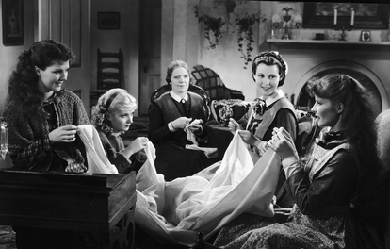
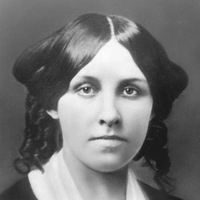
Louisa May Alcott (November 29, 1832 – March 6, 1888) was an American novelist and poet best known as the author of the novel Little Women (1868) and its sequels Little Men (1871) and Jo’s Boys (1886). Raised by her transcendentalist parents, Abigail May and Amos Bronson Alcott in New England, she grew up among many of the well-known intellectuals of the day such as Ralph Waldo Emerson, Nathaniel Hawthorne, and Henry David Thoreau.
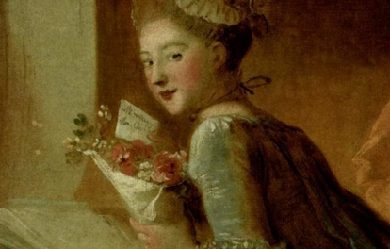

Mary Barber (c.1685– C.1755), poet, was a member of Swift’s circle. Life Mary’s parents are not known. She married the amateur artist and draper, Rupert Barber (1719-1772) from Dublin, whose pastel portrait of Swift hangs in the National Portrait Gallery London. They had nine children, four of whom survived to adulthood. She wrote, in the preface to her Poems, that she wrote mainly in order to educate her children, but most commentators agree that she had a larger audience in view and was considerably engaged with intervening in wider social and political issues, as she did with “The Widow’s Address” when she argued on behalf of the widow of an army officer. She is an example of the eighteenth-century phenomenon of the “untutored poet, or 'natural genius’”: an artist of unprepossessing background who achieved the patronage of literary or aristocratic notables. Swift named her as part of his “triumfeminate,” along with poet and scholar Constantia Grierson and literary critic Elizabeth Sican, and maintained that she was a preeminent poet—"the best Poetess of both Kingdoms"—though this assessment was not universally shared and she has only recently garnered much critical attention. She moved into his circle and knew Laetitia Pilkington, who later became her harshest critic, Mary Delany, and poets Thomas Tickell, and Elizabeth Rowe. Swift’s patronage was a substantial support to Barber’s career and her Poems on several occasions (1734) was successful. The subscription list for the volume was almost “without precedent for its resplendent length and illustrious contents, and it was moreover remarkable given Barber’s otherwise pedestrian social standing as an ailing Irish housewife.” There were over nine hundred subscribers including various aristocrats and a number of literary luminaries, notably Pope, Arbuthnot, Gay, Walpole, and of course Swift himself. She did not, however, achieve financial stability until at her request and in order to alleviate her financial distress, Swift gave her the English rights to his Complete Collection of Genteel and Ingenious Conversation (1738). Her health declined after the publication of her Poems and subsequent writing was sparse. She did publish some verses about the gout, from which she suffered for over two decades, in the Gentleman’s Magazine in 1737. She died in or around 1755. Works * “The Widow’s Address” (Dublin, 1725) * “A Tale Being an Addition to Mr. Gay’s Fables” (Dublin, 1728) * Tunbrigialia, or, Tunbridge Miscellanies, for the Year 1730 (contributor). * Poems on several occasions (sold by subscription, printed by Samuel Richardson, 1734. 2nd ed. 1735; reissued 1736). * Poems by Eminent Ladies (contributor, 1755). Resources * Coleborne, Bryan. “Barber, Mary (c.1685–1755).” Oxford Dictionary of National Biography. Ed. H. C. G. Matthew and Brian Harrison. Oxford: OUP, 2004. 1 Apr. 2007. * Fanning, Christopher. “The Voices of the Dependent Poet: the case of Mary Barber.” Women’s Writing 8.1 (2001): 81-97. * Lonsdale, Roger ed. “Mary Barber.” Eighteenth-Century Women Poets. New York: Oxford University Press, 1989. 118-129.
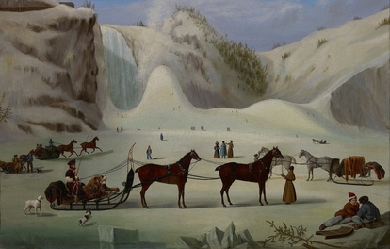
Rosanna Eleanor Leprohon (January 12, 1829– September 20, 1879), born Rosanna Eleanor Mullins, was a Canadian writer and poet. She was “one of the first English-Canadian writers to depict French Canada in a way that earned the praise of, and resulted in her novels being read by, both anglophone and francophone Canadians.”
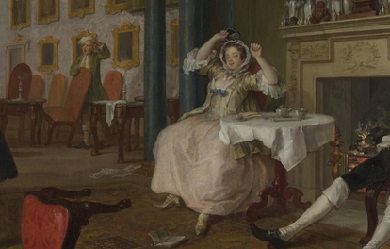
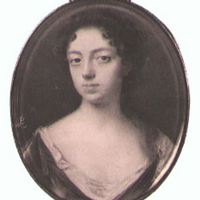
Anne Finch (née Kingsmill), Countess of Winchilsea (April 1661– 5 August 1720), was an English poet, the third child of Sir William Kingsmill of Sydmonton Court and his wife, Anne Haslewood. She was well-educated as her family believed in good education for girls as well as for boys. In 1682, Anne Kingsmill went to St James’s Palace to become a maid of honour to Mary of Modena (wife of James, Duke of York, who later became King James II). There she met the courtier Heneage Finch whom she married on 15 May 1684. It was a happy marriage and Anne wrote several love poems to her husband, most famous perhaps A Letter to Dafnis, though her most well-known works speak on her bouts of depression and her fervent belief in social justice for women. Finch’s works often express a desire for respect as a female poet, lamenting her difficult position as a woman in the literary establishment and the court, while writing of an intense artistic impulse to write despite the difficulties. On 4 August 1712, Charles Finch, 4th Earl of Winchilsea, died childless. This made Anne’s husband, his uncle, the 5th Earl of Winchilsea, and Anne, the Countess of Winchilsea. She died in Westminster in 1720 and was buried at her home at Eastwell, Kent. Works * Did I, my lines intend for public view, How many censures, would their faults pursue, Some would, because such words they do affect, Cry they’re insipid, empty, and uncorrect. And many have attained, dull and untaught, The name of wit only by finding fault. True judges might condemn their want of wit, * And all might say, they’re by a woman writ…" (Finch, The Introduction) * With these lines, written in the poem The Introduction by Anne Finch, Countess of Winchilsea, readers are welcomed into a vibrant, emotional, and opinionated style. They are unapologetically let in on the distinctly female voice that is to come. Melancholy, full of wit, and socially conscious, Anne Finch wrote verse and dramatic literature with a talent that has caused her works to not only survive, but to flourish in an impressive poetic legacy throughout the centuries since her death. * Finch’s range as a writer was vast. She experimented with the poetic traditions of her day, often straying from the fold through her use of rhyme, meter and content, which ranged from the simplistic to the metaphysical. Additionally, Finch wrote several satiric vignettes modelled after the short tales of French fabulist Jean de La Fontaine. She mocked La Fontaine’s fables, offering social criticism through biting sarcasm. Finch’s more melancholy fare, however, gained her wider acclaim. Her famous poems in this sullen vein include A Nocturnal Reverie and Ardelia to Melancholy, both depicting severe depression. Her poetry is often considered to fall in the category of Augustan, reflecting upon nature and finding both an emotional and religious relationship to it in her verse. Finch also skilfully employed the Pindaric ode, exploring complex and irregular structures and rhyme schemes. Her most famous example of this technique is in The Spleen (1709), a poetic expression of depression and its effects: * What art thou, Spleen, which ev’ry thing dost ape? * Thou Proteus to abused mankind, Who never yet thy real cause could find, Or fix thee to remain in one continued shape. Still varying thy perplexing form, Now a Dead Sea thou’lt represent, A calm of stupid discontent, Then, dashing on the rocks wilt rage into a storm. Trembling sometimes thou dost appear, * Dissolved into a panic fear… (Finch, The Spleen) * This poem was first published anonymously, though it went on to become one of her most renowned pieces. As Virginia Woolf, a later proponent of intellectual investigation into Finch’s life and work, once famously wrote, “I would venture to guess that Anon, who wrote so many poems without signing them, was often a woman” (Woolf, A Room of One’s Own). * Anne Finch is known today as one of the most versatile and gifted poets (one of her poems was set to music by Purcell) of her generation. Biography * (The following essay is taken from the Biography Reference Center.) * As a poet, Finch attained a modest amount of notoriety during her lifetime, which spanned the late 17th and early 18th centuries. However, her large body of work, written during the Augustan period (approximately 1660–1760), would earn greater attention after her death. While Finch also authored fables and plays, today she is best known for her poetry: lyric poetry, odes, love poetry and prose poetry. Later literary critics recognised the diversity of her poetic output as well as its personal and intimate style. * In her works Finch drew upon her own observations and experiences, demonstrating an insightful awareness of the social mores and political climate of her era. But she also artfully recorded her private thoughts, which could be joyful or despairing, playful or despondent. The poems also revealed her highly developed spiritual side. * Finch was born Anne Kingsmill in April 1661 in Sydmonton, Hampshire, located in the southern part of England. Her parents were Sir William Kingsmill and Anne Haslewood. She was the youngest of three children. Her siblings included William and Bridget Kingsmill. * The young Anne never knew her father, as he died only five months after she was born. In his will, he specified that his daughters receive financial support equal to that of their brother for their education. Her mother remarried in 1662, to Sir Thomas Ogle, and later bore Anne Kingsmill’s half-sister, Dorothy Ogle. Anne would remain close to Dorothy for most of their lives. * Finch’s mother died in 1664. Shortly before her death she wrote a will giving control of her estate to her second husband. The will was successfully challenged in a Court of Chancery by Anne Kingsmill’s uncle, William Haslewood. Subsequently, Anne and Bridget Kingsmill lived with their grandmother, Lady Kingsmill, in Charing Cross, London, while their brother lived with his uncle William Haslewood. * In 1670 Lady Kingsmill filed her own Court of Chancery suit, demanding from William Haslewood a share in the educational and support monies for Anne and Bridget. The court split custody and financial support between Haslewood and Lady Kingsmill. When Lady Kingsmill died in 1672, Anne and Bridget rejoined their brother to be raised by Haslewood. The sisters received a comprehensive and progressive education, something that was uncommon for females at the time, and Anne Kingsmill learned about Greek and Roman mythology, the Bible, French and Italian languages, history, poetry, and drama. At the court of Charles II * The sisters remained in the Haslewood household until their uncle’s death in 1682. 21 years old at the time, Anne Kingsmill then went to live at St James’s Palace, joining the court of Charles II. She became one of six maids of honour to Mary of Modena, who was the wife of James, Duke of York, who would later become King James II. * Apparently Anne’s interest in poetry began at the palace, and she started writing her own verse. Her friends included Sarah Churchill and Anne Killigrew, two other maids of honour who also shared poetic interests. However, when Anne Kingsmill witnessed the derision within the court that greeted Killigrew’s poetic efforts (poetry was not a pursuit considered suitable for women), she decided to keep her own writing attempts to herself and her close friends. She remained secretive about her poetry until much later in her life, when she was encouraged to publish under her own name. * While residing at court, Anne Kingsmill also met Colonel Heneage Finch, the man who would become her husband. A courtier as well as a soldier, Colonel Finch had been appointed Groom of the Bedchamber to James, Duke of York, in 1683. His family had strong Royalist connections, as well as a pronounced loyalty to the Stuart dynasty, and his grandmother had become Countess of Winchilsea in 1628. Finch met Kingsmill and fell in love with her, but she at first resisted his romantic overtures. However, Finch proved a persistent suitor and the couple was finally married on 15 May 1684. * Upon her marriage, Anne Finch resigned her court position, but her husband retained his own appointment and would serve in various government positions. As such, the couple remained involved in court life. During the 1685 coronation of James II, Heneage Finch carried the canopy of the Queen, Mary of Modena, who had specifically requested his service. * The couple’s marriage proved to be enduring and happy, in part due to the aspects of equality in their partnership. Indeed, part of the development of her poetic skills was brought about by expressing her joy in her love for her husband and the positive effects of his lack of patriarchal impingement on her artistic development. These early works, many written to her husband (such as "A Letter to Dafnis: April 2d 1685"), celebrated their relationship and ardent intimacy. In expressing herself in such a fashion, Anne Finch quietly defied contemporary social conventions. In other early works she aimed a satiric disapproval at prevailing misogynistic attitudes. Still, her husband strongly supported her writing activities. * Despite their court connections, Anne and Heneage Finch led a rather sedate life. At first they lived in Westminster; then, as Heneage Finch became more involved in public affairs, they moved to London. His involvement had increased when James II took the throne in 1685. The couple demonstrated great loyalty to the king in what turned out to be a brief reign. Refusal to take Oath of Allegiance to King William * James II was deposed in 1688 during the “Bloodless Revolution”. During his short reign, James fell under intense criticism for his autocratic manner of rule. Eventually he fled England for exile in Saint-Germain, France. As a result, the British Parliament offered William of Orange the English crown. When the new monarchs, William and Mary, assumed the throne, oaths of allegiance became a requirement for both the public and the clergy. William and Mary were Protestants, and the Finches remained loyal to the Catholic Stuart court, refusing to take the oath. They also viewed their oaths to the previous monarchy as morally binding and constant. But such a stance invited trouble. Heneage Finch lost his government position and retreated from public life. As the loss of his position entailed a loss of income, the Finches were forced to live with friends in London for a period. However, while living in the city the couple faced harassment, fines and potential imprisonment. * In April 1690 Heneage Finch was arrested and charged with Jacobitism for attempting to join the exiled James II in France. It was a difficult time for Jacobites and Nonjurors (those who had refused to take the oath of allegiance, such as the Finches), as their arrests and punishments were abusive. Because of his arrest, Heneage and Anne Finch remained separated from April until November of that year. Understandably, the circumstances caused the couple a great deal of emotional turmoil. Living with friends in Kent while her husband prepared his defence in London, Anne Finch often succumbed to bouts of depression, something that afflicted her for most of her adult life. The poems that she wrote during this period, such as “Ardelia to Melancholy”, reflected her mental state. Other poems involved political themes. But all of her work was noticeably less playful and joyous than her earlier output. Move to country estate * After Heneage Finch was released and his case dismissed, his nephew Charles Finch, the fourth Earl of Winchelsea, invited the couple to permanently move into the family’s Eastwell Park, Kent, estate. The Finches took up residence in late 1690 and found peace and security on the beautiful estate, where they would live for more than 25 years in the quiet countryside. * For Anne Finch, the estate provided a fertile and supportive environment for her literary efforts. Charles Finch was a patron of the arts and, along with Heneage Finch, he encouraged Anne’s writing. Her husband’s support was practical. He began collecting a portfolio of her 56 poems, writing them out by hand and making corrective changes. One significant change involved Anne’s pen name, which Heneage changed from “Areta” to “Ardelia”. * The peace and seclusion at Eastwell fostered the development of Finch’s poetry, and the retirement in the country provided her with her most productive writing period. Her work revealed her growing knowledge of contemporary poetic conventions, and the themes she addressed included metaphysics, the beauty of nature (as expressed in “A Nocturnal Reverie”), and the value of friendship (as in “The Petition for an Absolute Retreat”). Return to public life * By the early 18th century the political climate in England had generally improved for the Finches. King William died in 1702, and his death was followed by the succession to the throne of Queen Anne, the daughter of James II, who had died in 1701. With these developments, the Finches felt ready to embrace a more public lifestyle. Heneage Finch ran for a parliamentary seat three times (in 1701, 1705, and 1710), but was never elected. Still, the Finches felt the time was right to leave the seclusion of the country life and move into a house in London. * In London, Anne Finch was encouraged to publish her poetry under her own name. Earlier, in 1691, she had anonymously published some of her poetry. In 1701 she published “The Spleen” anonymously. This well-received reflection on depression would prove to be the most popular of her poems in her lifetime. When the Finches returned to London, Anne acquired some important and influential friends, including renowned writers such as Jonathan Swift and Alexander Pope, who encouraged her to write and publish much more openly. * She was reluctant, as she felt the current social and political climate remained oppressive as far as women were concerned. (In her poem “The Introduction,” which was privately circulated, she reflected on contemporary attitudes toward female poets.) When she published Miscellany Poems, on Several Occasions in 1713, the cover page of the first printing indicated that the collected works (which included 86 poems as well as a play) were “Written by a Lady.” However, on subsequent printings, Finch (as Anne, Countess of Winchilsea) received credit as the author. Lady Winchilsea * Anne Finch became Countess of Winchilsea upon the sudden and unexpected death of Charles Finch on 4 August 1712. As Charles Finch had no children, his uncle Heneage Finch (died 1726) became the Earl of Winchilsea, making Anne the Countess. However, the titles came with a cost. The Finches had to assume Charles Finch’s financial and legal burdens. The issues were eventually settled in the Finches’ favour in 1720, but not before the couple had endured nearly seven years of emotional strain. * During this period, Heneage and Anne Finch faced renewed strains resulting from court politics. When Queen Anne died in 1714, she was succeeded by George I. Subsequently, a Whig government, which was hostile to the Jacobite cause, rose to power. The Jacobite rebellion, which took place in Scotland in 1715, further aggravated the tense political situation. The Finches became greatly concerned about their safety, especially after a friend, Matthew Prior, who shared their political sympathies, was sent to prison. Deteriorating health * All of her worries combined started to take a toll on Anne Finch’s health, which began to seriously deteriorate. For years she had been vulnerable to depression, and in 1715 she became seriously ill. Her later poems reflected her turmoil. In particular, “A Suplication for the joys of Heaven” and “A Contemplation” expressed her concerns about her life and political and spiritual beliefs. * She died in Westminster, London, and her body was returned to Eastwell for burial, according to her previously stated wishes. Her husband produced an obituary that praised her talents as a writer and her virtues as an individual. A portion of it read, “To draw her Ladyship’s just Character, requires a masterly Pen like her own (She being a fine Writer, and an excellent Poet); we shall only presume to say, she was the most faithful Servant to her Royall Mistresse, the best Wife to her Noble Lord, and in every other Relation, publick and private, so illustrious an Example of such extraordinary Endowments, both of Body and Mind, that the Court of England never bred a more accomplished Lady, nor the Church of England a better Christian.” Poetry rediscovered * The only major collection of Anne Finch’s writings that appeared in her lifetime was Miscellany Poems, on Several Occasions. Nearly a century after her death her poetic output had been largely forgotten, until the great English poet William Wordsworth praised her nature poetry in an essay included in his 1815 volume Lyrical Ballads. * A major collection titled The Poems of Anne, Countess of Winchilsea, edited by Myra Reynolds, was published in 1903. For many years it was considered the definitive collection of her writings. It remains the only scholarly collection of Finch’s poetry, and includes all of the poems from Miscellany Poems and poems retrieved from manuscripts. Further, Reynolds’s impressive introduction did as much to re-establish Finch’s reputation as Wordsworth’s previous praise. * Later, The Wellesley Manuscript, which contained 53 unpublished poems, was released. Literary scholars have noted Finch’s distinctive voice and her poems’ intimacy, sincerity, and spirituality. They also expressed appreciation for her experimentation as well as her assured usage of Augustan diction and forms. * According to James Winn (The Review of English Studies, lix, 2008, pp 67–85) Anne Finch is the librettist of Venus and Adonis, with music by John Blow; the work is considered by some scholars to be the first true opera in the English language. In his critical edition of the opera for the Purcell Society, Bruce Wood agrees with Winn. * In 1929, in her classic essay A Room of One’s Own, Virginia Woolf both critiques Finch’s writing and expresses great admiration for it. In Woolf’s examination of the “female voice” and her search for the history of female writers, she argues that Finch’s writing is “harassed and distracted with hates and grievances,” pointing out that to Finch “men are hated and feared, because they have the power to bar her way to what she wants to do—which is to write.” However, Woolf excuses the flaws she perceives in Finch’s work by claiming that Finch surely had to “encourage herself to write by supposing that what she writes will never be published.” She goes on to acknowledge that in Finch’s work, "Now and again words issue of pure poetry…It was a thousand pities that the woman who could write like that, whose mind was turned to nature, and reflection, should have been forced to anger and bitterness." Woolf goes on in defence of her as a gifted but sometimes understandably misguided example of women’s writing. It is evident that Woolf sympathises deeply with Finch’s plight as a female poet, and though she takes issue with some of the content in Finch’s writing, she expresses grief that Finch is so unknown: "…when one comes to seek out the facts about Lady Winchilsea, one finds, as usual, that almost nothing is known about her." Woolf wishes to know more about “this melancholy lady, who loved wandering in the fields and thinking about unusual things and scorned, so rashly, so unwisely, ‘the dull manage of a servile house.’”
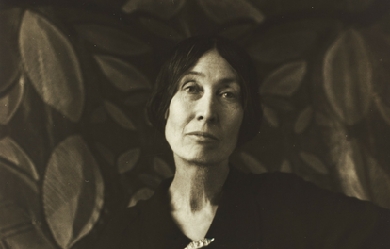
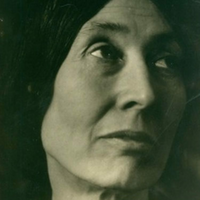
Lola Ridge, born Rose Emily Ridge (12 December 1873 Dublin—19 May 1941 Brooklyn) was an Irish-American anarchist poet and an influential editor of avant-garde, feminist, and Marxist publications. She is best remembered for her long poems and poetic sequences, published in numerous magazines and collected in five books of poetry. Along with other political poets of the early Modernist period, Ridge has received renewed critical attention since the beginning of the 21st century and is praised for making poetry directly from harsh urban life. A new selection of her poetry was published in 2007 and a biography in 2016.
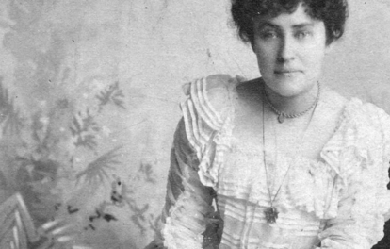
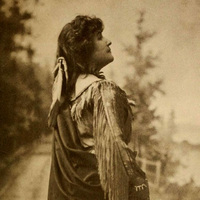
Emily Pauline Johnson (also known in Mohawk as Tekahionwake –pronounced: dageh-eeon-wageh, literally: ‘double-life’) (10 March 1861– 7 March 1913), commonly known as E. Pauline Johnson or just Pauline Johnson, was a Canadian writer and performer popular in the late 19th century. Johnson was notable for her poems and performances that celebrated her Aboriginal heritage; her father was a hereditary Mohawk chief of mixed ancestry. She also drew from English influences, as her mother was an English immigrant. One such poem is the frequently anthologized “The Song My Paddle Sings”. Johnson’s poetry was published in Canada, the United States and Great Britain. Johnson was one of a generation of widely read writers who began to define a Canadian literature. While her literary reputation declined after her death, since the later 20th century, there has been renewed interest in her life and works. A complete collection of her known poetry was published in 2002. Life and work Early life and education Pauline Johnson was born at Chiefswood, the family home built by her father in 1856 on his 225-acre estate at the Six Nations reserve outside Brantford, Ontario. She was the youngest of four children of Emily Susanna Howells Johnson (1824–1898), a native of England, and George Henry Martin Johnson (1816–1884), a Mohawk hereditary clan chief. His mother was of partial Dutch descent and born into the Wolf clan. Her mother was a Dutch girl who became assimilated as Mohawk after being taken captive and adopted by a Wolf clan family. Howells had immigrated to the United States in 1832 as a young child with her father, stepmother and siblings. Although Emily and George Johnson’s marriage had been opposed by both their families, and they were concerned that their mixed-race family would not be socially accepted, they were acknowledged as a leading Canadian family (Gray 2002, p. 61). The Johnsons enjoyed a high standard of living, and their family and home were well known. Chiefswood was visited by such intellectual and political guests as the inventor Alexander Graham Bell, painter Homer Watson, noted anthropologist Horatio Hale, and Lady and Lord Dufferin, Governor General of Canada. Emily and George Johnson encouraged their four children to respect and learn about both the Mohawk and the English aspects of their heritage. Because the children were born to a Native father, by British law they were legally considered Mohawk and wards of the British Crown. But under the Mohawk kinship system, because their mother was not Mohawk they were not born into a tribal clan; they were excluded from important aspects of the tribe’s matrilineal culture. Their paternal grandfather John Smoke Johnson, who had been elected an honorary Pine Tree Chief, was an authority in the lives of his grandchildren. He told them many stories in the Mohawk language, which they comprehended but did not speak fluently. Pauline Johnson said that she inherited her talent for elocution from her grandfather. Late in life, she expressed regret for not learning more of his Mohawk heritage. A sickly child, Johnson did not attend Brantford’s Mohawk Institute. It was established in 1834 as one of Canada’s first residential schools for Native children. Her education was mostly at home and informal, derived from her mother, a series of non-Native governesses, a few years at the small school on the reserve, and self-directed reading in the family’s expansive library. She became familiar with literary works by Byron, Tennyson, Keats, Browning, and Milton. She enjoyed reading tales about Native peoples, such as Longfellow’s epic poem The Song of Hiawatha and John Richardson’s Wacousta. At the age 14, Johnson went to Brantford Central Collegiate with her brother Allen, and she graduated in 1877. A schoolmate was Sara Jeannette Duncan, who developed her own journalistic and literary career. Literary and stage career During the 1880s, Pauline Johnson wrote and performed in amateur theatre productions. She enjoyed the Canadian outdoors, where she traveled by canoe. In 1883 she published her first full-length poem, “My Little Jean,” in the New York Gems of Poetry. She began to increase the pace of her writing and publishing afterward. Shortly after her father’s death in 1884, the family rented out Chiefswood. Pauline Johnson moved with her widowed mother and sister to a modest home in Brantford. She worked to support them all, and found that her stage performances allowed her to make a living. Johnson supported her mother until her death in 1898. In 1885, Charles G.D. Roberts published Johnson’s “A Cry from an Indian Wife” in The Week, Goldwin Smith’s Toronto magazine. She based it on events of the battle of Cut Knife Creek during the Riel Rebellion. Roberts and Johnson became lifelong friends. Johnson promoted her identity as a Mohawk, but as an adult spent little time with people of that culture. In 1885, Johnson traveled to Buffalo, New York to attend a ceremony honoring the Iroquois leader Sagoyewatha, also known as Red Jacket. She wrote a poem expressing admiration for him and a plea for reconciliation between British and Native peoples (Gray 2002, p. 90). In 1886, Johnson was commissioned to write a poem to mark the unveiling in Brantford of a statue honoring Joseph Brant, the important Mohawk leader who was allied with the British during and after the American Revolutionary War. Her “Ode to Brant” was read at a 13 October ceremony before “the largest crowd the little city had ever seen.” It called for brotherhood between Native and white Canadians under British imperial authority (Gray 2002, p. 90). The poem sparked a long article in the Toronto Globe, and increased interest in Johnson’s poetry and heritage. The Brantford businessman William F. Cockshutt read the poem at the ceremony, as Johnson was reportedly too shy. During the 1880s, Johnson built her reputation as a Canadian writer, regularly publishing in periodicals such as Globe, The Week, and Saturday Night. In the late 1880s and early 1890s, she published nearly every month, mostly in Saturday Night. Johnson was one of a group of Canadian authors contributing to a distinct national literature,. The inclusion of two of her poems in W.D. Lighthall’s anthology, Songs of the Great Dominion (1889), signaled her recognition and Theodore Watts-Dunton noted her for praise in his review of the book; he quoted her entire poem “In the Shadows” and called her “the most interesting poetess now living.” In her early works, Johnson wrote mostly about Canadian life, landscapes, and love in a post-Romantic mode, reflective of literary interests shared with her mother rather than her Mohawk heritage. The Young Men’s Liberal Association invited Johnson to a Canadian Authors Evening, held 16 January 1892 at the Toronto Art School Gallery. The only woman at the event, she read to an overflow crowd, along with luminaries such as Lighthall, William Wilfred Campbell, and Duncan Campbell Scott. “The poise and grace of this beautiful young woman standing before them captivated the audience even before she began to recite—not read, as the others had done”—her “Cry from an Indian Wife.” She was the only author to be called back for an encore. “She had scored a personal triumph and saved the evening from turning into a disaster.” The success of this performance began the poet’s 15-year stage career, as she was signed up by Frank Yeigh, who had organized the Liberal event. He gave her the headline for her first show on 19 February 1892, where she debuted a new poem written for the event, “The Song My Paddle Sings”. Johnson was perceived as quite young (although she was then 31), a beauty, and an exotic Native performer. After her first recital season, she decided to emphasize the Native aspects of her public figure by assembling and wearing a feminine Native costume. She wore it during the first part of the show, when reciting her dramatic “Indian” lyrics. At intermission she changed into fashionable English dress; in the second half, she appeared as a Victorian lady to recite her “English” verse. Johnson’s decision to develop her stage persona, and the popularity it inspired, showed that the audiences she encountered in Canada, England, and the United States recognized and were entertained by Native peoples in performance. There was great interest in Native Americans; the 1890s were also the period of popularity of Buffalo Bill Cody’s Wild West Show and ethnological aboriginal exhibits. Johnson and her siblings inherited an artifact collection from their father, which included significant items such as Mohawk wampum belts and spiritual masks. She used some items in her stage performances, but sold most later to museums, such as the Ontario Provincial Museum, or to collectors, such as the prominent American George Gustav Heye. Scholars have had difficulty identifying Johnson’s complete works, as much was published in periodicals. Her first volume of poetry, The White Wampum, was published in London, England in 1895. It was followed by Canadian Born in 1903. The contents of these volumes, together with additional poems, were published as the collection Flint and Feather in 1912. Reprinted many times, this book has been one of the best-selling titles of Canadian poetry. Since the 1917 edition, Flint and Feather has been misleadingly subtitled “The Complete Poems of E. Pauline Johnson”. But in 2002, professors Carole Gerson and Veronica Strong-Boag produced an edition, Tekahionwake: Collected Poems and Selected Prose, that contains all of Johnson’s poems found up to that date. Later life After retiring from the stage in August 1909, Johnson moved to Vancouver, British Columbia and continued writing. Her pieces included a series of articles for the Daily Province, based on stories related by her friend Chief Joe Capilano of the Squamish people of North Vancouver. In 1911, to help support Johnson, who was ill and poor, a group of friends organized the publication of these stories under the title Legends of Vancouver. They remain classics of that city’s literature. One of the stories was a Squamish legend of shape shifting: how a man was transformed into Siwash Rock “as an indestructible monument to Clean Fatherhood”. In another, Johnson told the history of Deadman’s Island, a small islet off Stanley Park. In a poem in the collection, she named one of her favourite areas “Lost Lagoon”, as the inlet seemed to disappear when the water emptied at low tide. The body of water has since been transformed into a permanent, fresh-water lake at Stanley Park, but it is still called “Lost Lagoon”. The posthumous Shagganappi (1913) and The Moccasin Maker (1913) are collections of selected stories first published in periodicals. Johnson wrote on a variety of sentimental, didactic, and biographical topics. Veronica Strong-Boag and Carole Gerson provided a provisional chronological list of Johnson’s writings in their book Paddling Her Own Canoe: The Times and Texts of E. Pauline Johnson (Tekahionwake) (2000). Johnson died of breast cancer in Vancouver, British Columbia on 7 March 1913. Her funeral (the largest until then in Vancouver history) was held on what would have been her 52nd birthday. Her ashes were buried near Siwash Rock in Stanley Park. In 1922 a cairn was erected at the burial site, with an inscription reading in part, “in memory of one whose life and writings were an uplift and a blessing to our nation”. Criticism and legacy Despite the acclaim she received from contemporaries, Johnson had a decline in reputation in the decades after her death. It was not until 1961, with commemoration of the centenary of her birth, that Johnson began to be recognized as an important Canadian cultural figure. A number of biographers and literary critics have downplayed her literary contributions, as they contend that her performances contributed most to her literary reputation during her lifetime. W. J. Keith wrote: “Pauline Johnson’s life was more interesting than her writing... with ambitions as a poet, she produced little or nothing of value in the eyes of critics who emphasize style rather than content.” The author Margaret Atwood admitted that she did not study literature by Native authors when preparing Survival: A Thematic Guide to Canadian Literature (1972), her seminal work. At its publication, she had said she could not find Native works. She mused, “Why did I overlook Pauline Johnson? Perhaps because, being half-white, she somehow didn’t rate as the real thing, even among Natives; although she is undergoing reclamation today.” Atwood’s comments indicated that Johnson’s multicultural identity contributed to her neglect by critics. As Atwood noted, since the late 20th century, Johnson’s writings and performance career have been reevaluated by literary, feminist, and postcolonial critics. They have appreciated her importance as a New Woman and a figure of resistance to dominant ideas about race, gender, Native Rights, and Canada. The growth in literature written by First Nations people during the 1980s and 1990s has prompted writers and scholars to investigate Native oral and written literary history, to which Johnson made a significant contribution. Legacy and honours * In 1922, the city of Vancouver erected a monument in Pauline Johnson’s honour at her well-loved Stanley Park. * 1945, Johnson was designated a Person of National Historic Significance. * In 1961, on the centennial of her birth, Johnson was celebrated with a commemorative stamp bearing her image, “rendering her the first woman (other than the Queen), the first author, and the first aboriginal Canadian to be thus honored.”. * Four Canadian schools have been named in Johnson’s honour: elementary schools in West Vancouver, British Columbia; Scarborough, Ontario; Hamilton, Ontario; and Burlington, Ontario; and a high school in Brantford, Ontario. * Chiefswood, Johnson’s childhood home constructed in 1856 in Brantford, has been listed as a National Historic Site because of both her father’s and her own historical importance. Preserved as a house museum, it is the oldest Native mansion surviving from pre-Confederation times. * An Ontario Historical Plaque was erected in front of the Chiefswood house museum by the province to commemorate E. Pauline Johnson’s role in the region’s heritage. * The Canadian actor Donald Sutherland read the following quote from her poem “Autumn’s Orchestra”, at the opening ceremonies of the 2010 Winter Olympics in Vancouver. * Know by the thread of music woven through * This fragile web of cadences I spin, * That I have only caught these songs since you * Voiced them upon your haunting violin. * In 2010, composer Jeff Enns was commissioned to create a song based on Johnson’s poem “At Sunset”. His work was sung and recorded by the Canadian Chamber Choir under the artistic direction of Julia Davids. * The City Opera of Vancouver commissioned Pauline, a chamber opera dealing with her life, her multicultural identity, and her art. The composer is the Canadian Tobin Stokes, and the libretto was written by Margaret Atwood. The work premiered on 23 May 2014, at the York Theatre in Vancouver. The first opera to be written about Pauline Johnson, it is set 101 years earlier, in the last week of her life. Family history * The Mohawk ancestors of Johnson’s father, Chief George Henry Martin Johnson, had historically lived in what became the state of New York, the Mohawk traditional homeland in the present-day United States. In 1758, her great-grandfather Tekahionwake was born in New York. When he was baptized, he took the name Jacob Johnson, taking his surname from Sir William Johnson, the influential British Superintendent of Indian Affairs, who acted as his godfather. The Johnson surname was subsequently passed down in the family. * After the American Revolutionary War started, Loyalists in the Mohawk Valley came under intense pressure. The Mohawk and three other Iroquois tribes were allies of the British rather than the rebel colonists. Jacob Johnson and his family moved to Canada. After the war they settled permanently in Ontario on land given by the Crown in partial compensation for Iroquois losses of territory in New York. * His son John Smoke Johnson had a talent for oratory, spoke English as well as Mohawk, and demonstrated his patriotism to the Crown during the War of 1812. As a result, John Smoke Johnson was made a Pine Tree Chief at the request of the British government. Although John Smoke Johnson’s title could not be inherited, his wife Helen Martin was descended from the Wolf Clan and a founding family of the Six Nations. Through her lineage and influence (as the Mohawk were matrilineal), their son George Johnson was named chief. * Chief George Johnson inherited his father’s gift for languages and began his career as a church translator on the Six Nations reserve. Assisting the Anglican missionary, Johnson met his sister-in-law Emily Howells. They fell in love and married. In 1853, the couple’s interracial marriage displeased both the Johnson and Howells families. (Several prominent Canadian families were descended from 18th and 19th-century marriages between British fur traders, who had capital and social standing, and daughters of First Nations chiefs, which had been considered economic and social alliances.) The birth of their first child reconciled the Johnson family to the marriage. In 1856 Johnson built Chiefswood, a wood mansion where the family lived for years. * In his roles as government interpreter and hereditary Chief, George Johnson developed a reputation as a talented mediator between Native and European interests. He was well respected in Ontario. He also made enemies because of his efforts to stop illegal trading of reserve timber. Physically attacked by Native and non-Native men involved in this traffic, Johnson suffered from health problems afterward. He died of a fever in 1884. * Emily Howells was born in England to a well-established British family who immigrated to the United States in 1832. Her father Henry Howells was a Quaker and intended to join the American abolitionist movement. Emily’s mother Mary Best Howells had died when the girl was five, before the family left England. Her father married again before they immigrated. In the US, he moved his family to several American cities, where he founded schools to gain an income, before settling in Eaglewood, New Jersey. After his second wife died (women had a high mortality in childbirth), Howells married a third time, and fathered a total of 24 children. He opposed slavery and encouraged his children to “pray for the blacks and to pity the poor Indians. Nevertheless, his compassion did not preclude the view that his own race was superior to others”. * At the age of 21, Emily Howells moved to the Six Nations reserve in Ontario, Canada to join her older sister, who had moved there with her Anglican missionary husband. Emily helped her care for her growing family. After falling in love with the Mohawk George Johnson, Howells gained a better understanding of the Native peoples and some perspective on her father’s beliefs.
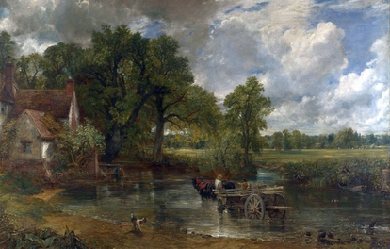
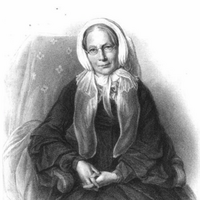
Ann Taylor (30 January 1782– 20 December 1866) was an English poet and literary critic. In her youth she was a writer of verse for children, for which she achieved long-lasting popularity. In the years immediately preceding her marriage, she became an astringent literary critic of growing reputation. She is, however, best remembered as the elder sister and collaborator of Jane Taylor. The literary family The Taylor sisters were part of an extensive literary family, daughters of Isaac Taylor of Ongar. Ann was born in Islington and lived with her family at first in London and later in Lavenham in Suffolk, in Colchester and, briefly, in Ongar. The sisters’ father, Isaac Taylor, was, like his own father, an engraver. He later became an educational pioneer and Independent minister and wrote a number of instructional books for the young. Their mother, Mrs (Ann Martin) Taylor (1757–1830) wrote seven works of moral and religious advice– in many respects liberal for their time– two of them fictionalized. Ann and Jane’s brothers, Isaac and Jefferys, also wrote, the former being a theologian, but also the inventor of a patent beer tap. The elder brother Charles Taylor edited The Literary Panorama, for which he wrote on topics from art to politics, and produced, anonymously, a massive annotated translation of Augustin Calmet’s Dictionary of the Bible. His younger brother Josiah was a publisher, chiefly of works on architecture and design. Authorship The sisters and their authorship of various works have often been confused, usually to Jane’s advantage. This is in part because their early works for children were published together and without attribution, but also because Jane, by dying young at the height of her powers, unwittingly attracted early posthumous eulogies, including what is almost a hagiography by her brother Isaac, and much of Ann’s work came to be ascribed to Jane, a borrowing which, Ann ruefully remarked, she could ill afford and which Jane certainly did not require. It is true that Jane achieved much more than Ann as a writer of poetry for an adult readership– though Ann’s poem “The Maniac’s Song”, published in the Associate Minstrels (1810), was probably the finest short poem by either sister, and it has even been postulated that it was an inspiration for Keats’s La Belle Dame sans Merci (Lynette Felber: Ann Taylor’s “The Maniac’s Song”: an unacknowledged source for Keats’s “La Belle Dame sans Merci”. However, Ann also deserves to be remembered as a writer of prose, as evinced particularly by her autobiography and by the many letters of hers that survive. Her style is strong and vivid and, when she is not too preoccupied with moral and religious themes– like her sister Jane, she tended to pessimism about her own spiritual worth– it is often shot through with a pleasing and sometimes acerbic wit. The autobiography also provides much detailed and fascinating information about the life of a moderately prosperous dissenting family in the late 18th and early 19th centuries. Appreciations Ann Taylor’s son, Josiah Gilbert, wrote: “Two little poems– 'My Mother’, and 'The Star’, are perhaps, more frequently quoted than any. The first, a lyric of life, was by Ann, the second, of nature, by Jane; and they illustrate this difference between the sisters.” Both poems attracted the compliment of frequent parody throughout the 19th century. The logician Augustus De Morgan asserted (somewhat extravagantly) that Gilbert’s mother wrote “one of the most beautiful lyrics in the English language, or any other language” and not knowing that Ann Gilbert was still alive, called upon Tennyson to supply a less heterodox version of the final stanza, which seemed to de Morgan unworthy of the rest. Original Poems for Infant Minds by several young persons (by Ann and Jane and others) was first issued in two volumes in 1804 and 1805. Rhymes for the Nursery followed in 1806, and Hymns for Infant Minds in 1808. In Original Poems for Infant Minds the authors were identified for each poem. In Rhymes for the Nursery (1806) poems were not identified by author. Attributions for the sisters’ poems can be found in an exceptional Taylor resource: The Taylors of Ongar: An Analytical Bio-Bibliography by Christina Duff Stewart. Stewart cites a copy of Rhymes for the Nursery belonging to a nephew, Canon Isaac Taylor, annotated to indicate the respective authorship of Ann and Jane. Stewart also confirms attributions of Original Poems based on publisher’s records. Marriage and widowhood On 24 December 1813, Ann married Joseph Gilbert, an Independent (later Congregational) minister and theologian, and left Ongar to make a new home far from her family, at Masborough near Rotherham. A widower of thirty-three, Gilbert had proposed to Ann before he had even met her, forming a sound estimation of her character and intelligence from her writings, particularly as a trenchant critic in The Eclectic Review. Gilbert was, at the time of their marriage, the classical tutor at Rotherham Independent College– the nearest thing to a university open to dissenters at this time– and simultaneously pastor of the Nether Chapel in Sheffield. In 1817, he moved to the pastorate of the Fish Street Chapel in Hull and then, in 1825, to Nottingham, serving in chapels in the city for the rest of his life. Kept busy with the duties of wife and later mother, Ann Gilbert still managed to write poems, hymns, essays, and letters. Her interest in public matters, such as atheism, prison reform, and the anti-slavery movement, often spurred her to take up her pen, and the results of those scattered moments found a way into print. Oddly for one of such independence of mind and strongly held and usually liberal opinions, she was firmly opposed to female suffrage. After Gilbert died on 12 December 1852, Ann found time to write a short memoir of her husband. Nor did she spend the rest of her long life in gentle retirement. As well as actively supporting the members of her large family, through visits and a constant stream of letters– family was always of central concern to the Taylors– she travelled widely in many parts of Britain, taking in her stride as an old lady travelling conditions that might have daunted one much younger. She died on 20 December 1866 and was buried next to her husband in Nottingham General Cemetery, although the inscription recording this on the vast Gothic sarcophagus has disappeared.

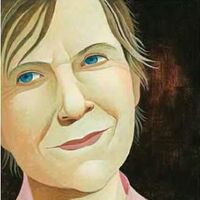
Rae Armantrout (born 13 April 1947) is an American poetess generally associated with the Language poets. Armantrout was born in Vallejo, California but grew up in San Diego. She has published ten books of poetry and has also been featured in a number of major anthologies. Armantrout currently teaches at the University of California, San Diego, where she is Professor of Poetry and Poetics.
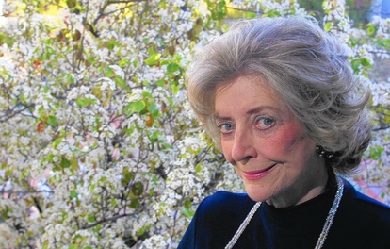
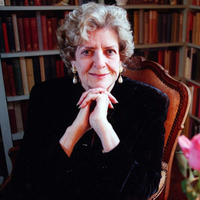
Carolyn Ashley Kizer (December 10, 1925– October 9, 2014) was an American poet of the Pacific Northwest whose works reflect her feminism. She won the Pulitzer Prize in 1985. According to an article at the Center for the Study of the Pacific Northwest, "Kizer reached into mythology in poems like “Semele Recycled”; into politics, into feminism, especially in her series of poems called “Pro Femina”; into science, the natural world, music, and translations and commentaries on Japanese and Chinese literatures".


